#TestamentsoftheGreenSea
Text
Updated: Kishite-Shabalic Script and a bit of the Kishic Language: Basics including an expanded list of nouns and verbs
I made this before but looking through it again I missed some things and made some mistakes, and so here is an updated version of this for y'all!
As with the Kishite spoken language, the Kishic script descends from and is largely identical to the Shabalic script, thus the term Kishite-Shabalic. Kishite-Syllabic is one of three scripts used in Kishetal along with Kishic hieroglyphs (reserved for religious/cultic purposes) and the logographic Shetalic script, which has fallen almost entirely out of favour.

The Kishite-Shabalic script is syllabic, thus each symbol is representative of one syllable composed of a consonant and a vowel. In addition there are characters which serve as punctuation used to symbolize the conclusion of a thought, in similar fashion to the Latin "." and "?", and the presence of a proper noun or divine status. Though it should be noted that these are not always actually used.
Unlike the Shetalic script which is traditional formed using styluses pressed into clay, Kishite-Shabalic is typical written either through carving or the use of charcoal/ink.
Shetalic is shown below on the left with Kishite-Shabalic on the right, both say the same thing.

Keep reading for more linguistic babbling!
Vowels
As a general rule when transcribing the Kishite script, when two of the same vowel are put next to one another, they are treated as a single vowel, rather than elongated as we might see in English with words like book or meet or feat. Two different vowels, such as O and E, E and A, and so on, are almost never put directly beside each other. In the rare instances when this does occur the "stronger" of the two vowels will cover the other. The order of strength from least to greatest is as follows:
i-e-a-o-u
The vowels of the Kishite language are pronounced phonetically
Thus:
I as in sweet or pin
E as in egg
A as in palm
O as in coat
U as in tool
e.g. the substantive adjective "the Mighty" Urjali- + -ul (substantive ending)
Urjaliul
Urjaliul
Urjalul
(OOr-Jahl-OOl)
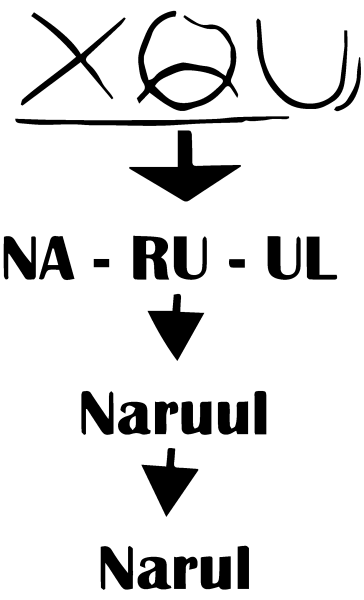
Special Note: One important differentiation between the Shabalic language and the Kishite language is that the Kishite language allows for the placing of multiple consonants in sequence. Take for example the Kishic name Ninma, in its original Shabalic form it would be Ninama (NI-NA-MA). Because of the fact that Kishite does have this trait, it has developed its own unique form of punctuation, the vowel drop. When placed below one of the syllabograms shown above, it cancels out the vowel, in essence rendering it mute. Ninma could alternatively be spelled using the formulation NI-IN-MA, similar to how Narul was spelled above, this is largely a matter of personal preference. The more traditional (Shabalic) form is often times considered more in keeping with nobility.
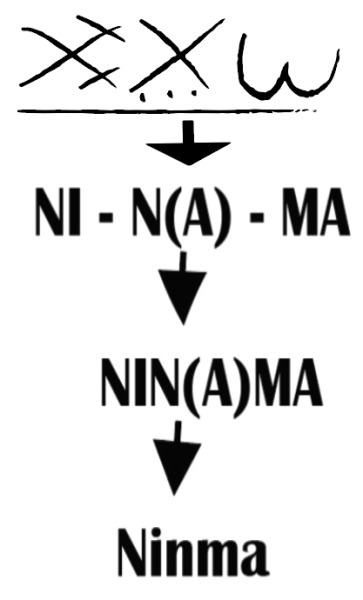
Sentence Structure
The Kishic language primarily follows a subject-object-verb structure.
Naru(u)l Nina(a)ma kimagiga(a)s
Narul Ninma kimagigas.
Narul Ninma carried.
Narul carried Ninma.
Tamel kim(u)unur fabiguta(a)s
Tamel kimunur fabigutas
Tamel gates broke.
Tamel broke gates.
Otilya (there is no -ia symbol in Kishite) Korithub luku ga.
Otilya Korithub luku ga
Otilia Korithia from is.
Otilia is from Korithia
Enni Wi tuba chi Jahubur horu jawishaga
The wind down the Mountain hard blows.
The wind blows hard down the mountain.
Noun and Adjective Declensions
The Kishic language system consists of the following cases: nominative, genitive, dative, accusative, and possessive (the Shabalic language includes an instrumental case), and distinguishes between two numbers (singular and plural) and four genders, Masc/Neutral (undefined groups or individuals), Feminine, Inanimate, and Divine.
Divine beings such as gods and certain spirits as well as the Sun, Mountains, Rivers, and the Sea are always referred to in the Divine gender. Some monsters also fall under this category. (Water Bi (Inanimate), Lake Bi (Divine))
Objects which are not and have never been alive are rendered in the Inanimate gender. This can get confusing in some instances, for example while the word corpse Nahoku would utilize the masc/neutral form, the word bone, hashudi, would utilize the inanimate. Another example of this is the word Oli which can mean either blood or wine based on whether it utilizes masc/neut or inanimate declensions.
Not all inanimate objects are rendered into the inanimate. Words like spear shukala use the masc/neutral. This group typically consists of weapons and tools. The stem used will depend on the root word.
Plants as a rule are always rendered into the feminine.
Cities and countries are neutral.
Royal Titles have a specific declension.
A few examples of declension are given in the tables below.
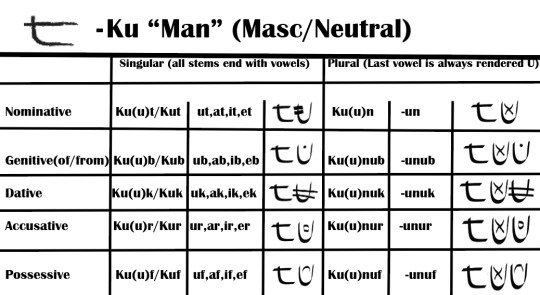

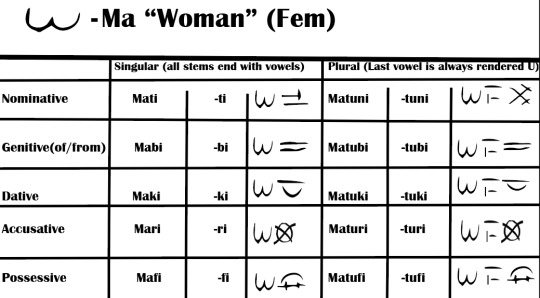
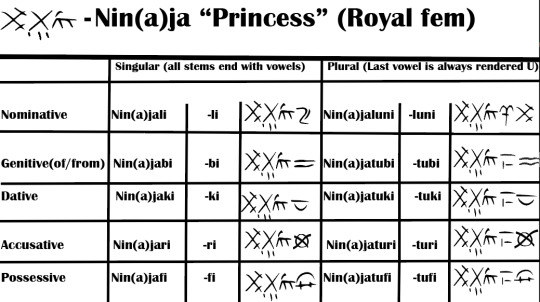


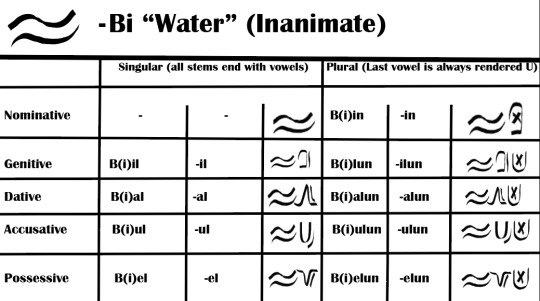
Sample Verbs
Verb stems always end with -i. The exception to this is the verb to be, which rather takes the form of the conjugation, thus the first person singular indicative present sample or "am" would be wa.
Talk: Akki
Breathe: Ki
Eat: Ushki
Struggle: Nari
Sleep: Eshsi
Fight: Orishri
Hunt: Pabakazi (Literally Bow art(ing))
Dance: Irteti
Kiss: Mishuzi
Copulate (and the more vulgar equivalent): Seshiti/Tu(u)ki
More verbs will be provided below.
Verbal Conjugation
There are two conjugation groups within Kishite verbs, the ha/za/hi-conjugation and the wa/ya/wi-conjugation. Which conjugation is used is dependent on the verb in question, typically words with a Shabalic root use the wa -conjugation while words derived from native languages more often use the ha -conjugation.
Within the Kishite language there are two voices (active and medio-passive), three moods (indicative, subjunctive, and imperative), three aspects (perfective, imperfective/continuous, and simple), and three tenses (Past, Present, and Future)
The present tense can be identified by -i/-a/-u/-o, past by -as/-os/-us, and future by -ad/-id.
Indicative: Used for Stating facts and thus the mood of reality.
Active: The Subject is the agent of the verb.
Mediopassive: The agent acts as a reflexive agent of the verb (acting upon itself) OR the subject is the target of the verb.
Present Simple Active: Narul is hungry
Past Simple Active: Narul was hungry
Future Simple Active: Ninma will not be hungry
Present Simple Mediopassive: Narul is accompanied by Ninma/ Narul cleans (himself).
Past Simple Mediopassive: Narul was accompanied by Suru
Future Simple Mediopassive: Narul will be accompanied by Mikrab
Present Perfect Active: Narul has slept
Past Perfect Active: Narul had slept
Future Perfect Active: Narul will have slept.
Present Perfect Mediopassive: Bop has been carried
Past Perfect Mediopassive: Bop had been carried
Future Perfect Mediopassive: Bop will have been carried
Present Imperfective/Continuous Active: Narul is walking
Past Continuous Active: The Deep Sun used to speak
Future Continuous Active: Zatar will be fighting
Present Continuous Mediopassive: Bop is being carried
Past Continuous Mediopassive: Bop was being carried
Future Continuous Mediopassive: Bop will be being carried
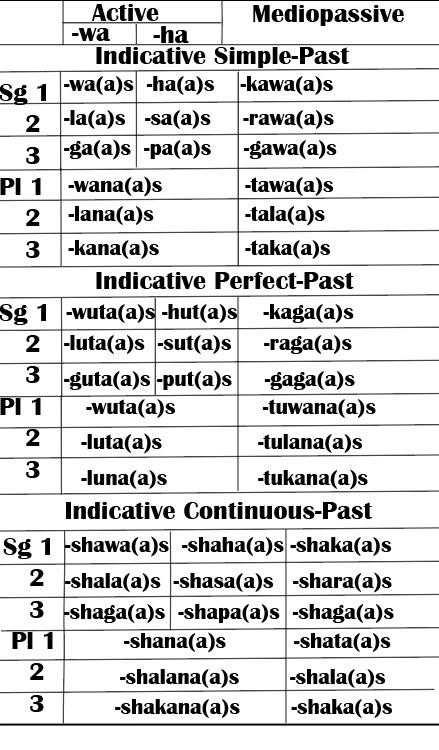

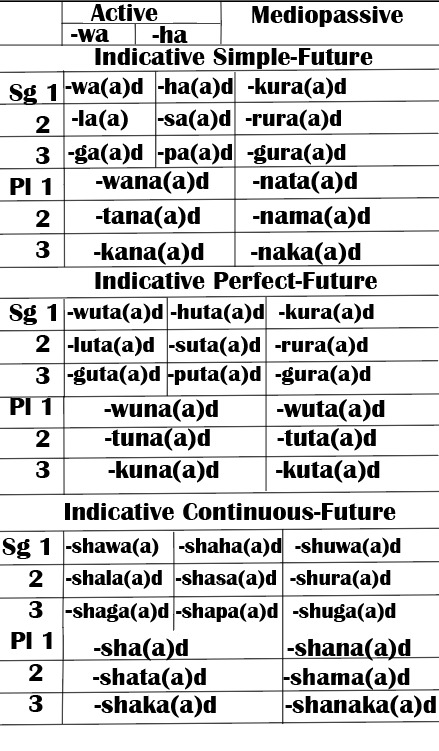
Subjunctive: Used for stating "unfacts", wishes and prayers, possibilities (may or might), hypotheticals, and opinions/judgements.
There is no Future conjugation for the Subjunctive, rather future events are expressed in the present through the use of may or might.
Additionally the Subjunctive is used for the following:
Jussive: used for suggestions and negative commands: What "should" or "should not" happen used only in the first person," we should leave/we should not leave" esh = should, na(e)sh = should not
Indefinite clauses: (if/until/whenever/whoever/however) ek = if, ekib = until, kowa(a)b =whoever, bowa(a)b = whenever, lowa(a)b = wherever, mowa(a)b = however
Purpose Clauses: "So that/ in order that" am = so that/in order that
Doubtful Assertions: "May not/Might not" er = may/maybe, na(e)r = may not, eb = might, nab = might not
Certain Future Assertions: "There certainly will..." erna = certainly (literally without maybe), na(e)rna = certainly not
Present Simple Active: We should run/ Narul wishes for rain
Past Simple Active: Narul wished for rain
Present Simple Mediopassive: If Ninma is stopped
Past Simple Mediopassive: If Ninma was stopped
Present Perfect Active: Narul has wished for rain
Past Perfect Active: Narul had wished for rain
Present Perfect Mediopassive: If Bop has been carried
Past Perfect Mediopassive: If Bop had been carried
Present Imperfective/Continuous Active: Narul is wishing for rain
Past Continuous Active: Narul used to wish for rain
Present Continuous Mediopassive: If Bop is being carried
Past Continuous Mediopassive: If Bop was being carried
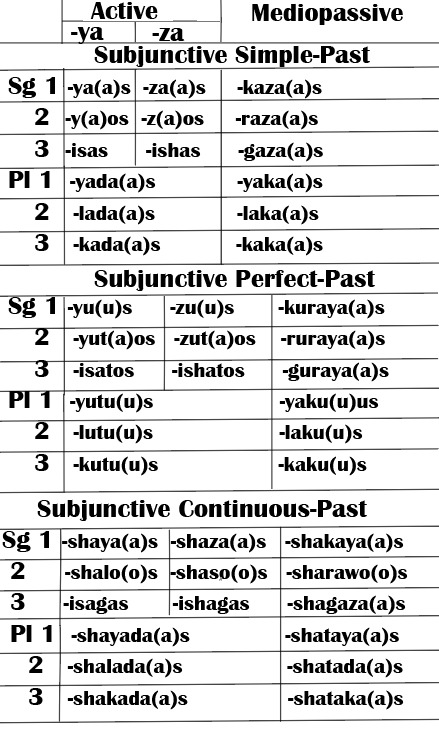
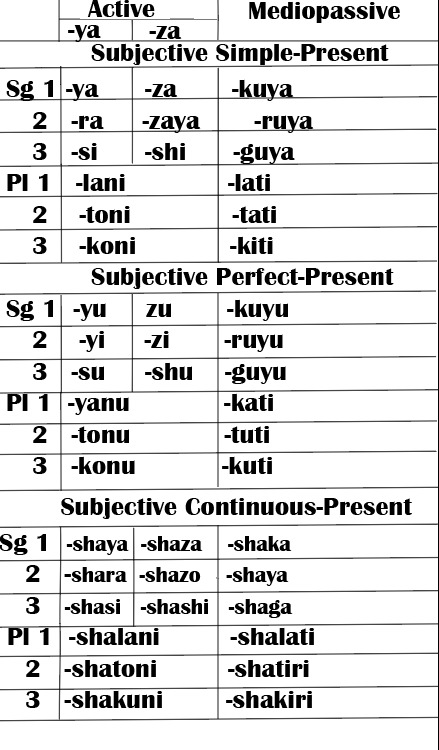
Imperative: Used for orders or commands/strong requests
Imperative is only conjugated in the second and third person singular or plural. Imperative is only used in the present and future, not for the past. Orders in the past are expressed as indicative. There are only Perfect and Imperfect Imperatives.
In the mediopassive form the imperative is translated as "Let them/you" for the first person of this the subjunctive is used "I/We should"
Present Perfect Active: Stop
Future Perfect Active: You will stop
Present Perfect Mediopassive: Let it stop
Future Perfect Mediopassive: Let it be stopped.
Present Imperfective/Continuous Active: Always stop
Future Continuous Active: You will always stop
Present Continuous Mediopassive: Let it be stopped (continuously)
Future Continuous Mediopassive: Let it be stopped (continuously)
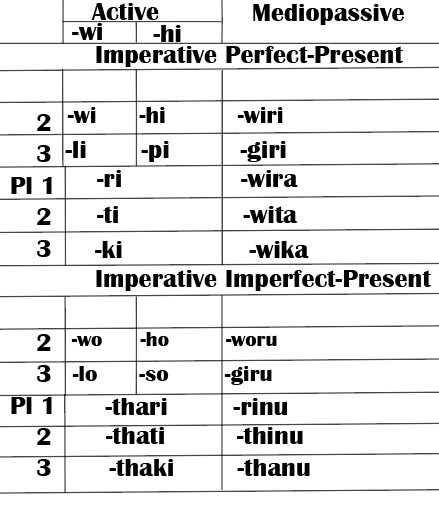
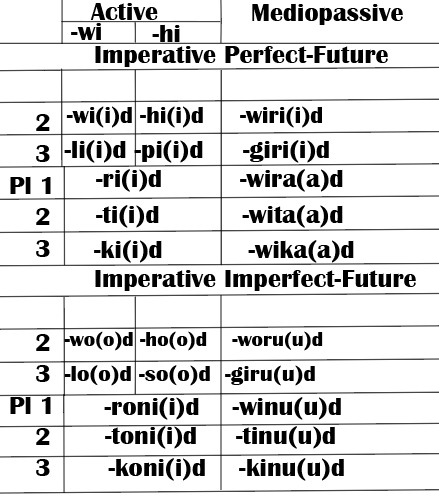
Additionally, the verbal system displays infinitives and participles in the present and past tenses.
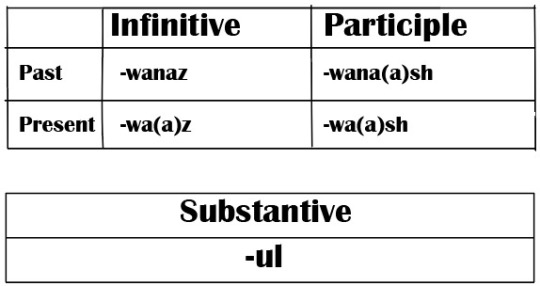
Prounouns
There are four genders of pronouns; Masculine, Feminine, Neutral, and Divine. Objects with the Inanimate designation are given neutral pronouns. Only deities receive divine pronouns, other entities and places in the divine categorization will typically receive feminine pronouns, with the exception of celestial bodies which always receive masculine pronouns.
It is considered improper to address both royalty and deities with pronouns, as such there are no specific first or second person pronouns for the Divine category.


Articles
As with pronouns there is no "inanimate" article group, rather inanimate subjects are given masc/neut articles.

Stay Tuned for the ridiculously long Dictionary post that will be coming soon(ish)!
This post and the dictionary post are why, despite being back, I still haven't been all that active. I'll respond to a couple tag games tonight and I'll try to do more tomorrow. I'm still planning on doing the Korithian Recipes! Money is just tight at the moment so I'm waiting for paychecks!
If y'all notice any mistakes or typos in this, send me a message so I can fix them! Same goes for if you have questions!
@illarian-rambling, @mk-writes-stuff, @kaylinalexanderbooks, @willtheweaver, @patternwelded-quill
@elsie-writes, @elizaellwrites, @the-ellia-west, @the-octic-scribe, @the-golden-comet
@finickyfelix, @theprissythumbelina, @autism-purgatory, @diabolical-blue , @tildeathiwillwrite
@katenewmanwrites, @leahnardo-da-veggie, @paeliae-occasionally, @melpomene-grey
@drchenquill, @marlowethelibrarian, @winterandwords, @phoenixradiant, @pluttskutt
@dyrewrites, @unrepentantcheeseaddict, @roach-pizza, @rivenantiqnerd, @pluppsauthor
@flaneurarbiter, @dezerex, @axl-ul, @surroundedbypearls
@treesandwords, @the-golden-comet
#testamentsofthegreensea#writeblr#fantasy writing#worldbuilding#conlang#conscript#writing#fantasy#narul#fantasy world#world building
61 notes
·
View notes
Text
An Introduction to Myself and My WIP!
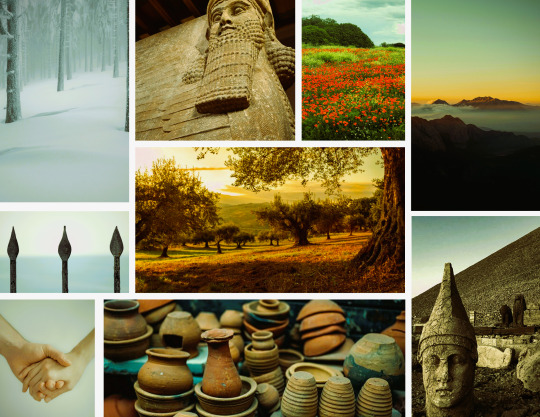
Hello everyone! A confession, this is actually a re-introduction. I've been here on Tumblr for a little less than a year now, but I haven't been the best about being active, life just sort of got in the way. As such I would like to reintroduce myself and what I've been working on.
For the purposes of Tumblr and in the interest of privacy you can call me C. I am in my mid-twenties, I use he/him pronouns, and I am happily married to my partner, who is also a C. I am queer, as is my partner. I enjoy cooking, fishing, Dnd(ing?), reading, and of course writing.
We both originally come from the US but we are currently living on the east coast of Scotland as I pursue my Msc in Archaeology.
I am trying to be a bit more active on here and I am always open to things like tags and asks, even if it takes me a bit to respond.
I think that's about it for me, and so without further ado let me introduce or reintroduce you to my WIP.
Testaments of the Green Sea
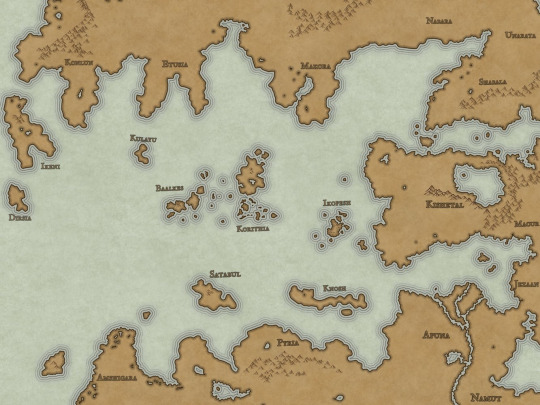
Genre: Epic Fantasy
Themes and Tropes (Or more accurately a random assortment of words vaguely related to the plot): Found Family, immortality, loss, love, war, power, memory, magic, insanity, The passage of time, growing up, queerness in the ancient world, violence, spirits, fantasy outside of medieval europe
Summary: Book one of the Testaments of the Green Sea (The lands of the Green Sea are pictured above) follows the journeys of the giant slave Narul and the princess Ninma.
After unexpected tragedy forces the two to flee from the Great city of Labisa, they find themselves on a journey which carries them across the ancient lands of Kishetal. Along the way they encounter spirits, demons, war, gods, pirates, and slavers.
TW for death/grief, violence/blood/gore, mental illness, physical illness, abuse, and cannibalism, awkward queerness, secondhand embarrasment etc, etc.
Excerpt( First Paragraph of Chapter 1):
The blood dripped into the awaiting bowl, painting its alabaster walls crimson. The slave watched the dark liquid trickle down his arm, skirting past the hairs, rolling veins, and moles. Even after these twenty years of weekly blood lettings, he could not shake a creeping feeling of unease as his eyes followed the sanguine river creeping its way across his arm. His own face gazed back at him from the scarlet pool. He could not meet his own eye, could not stand to look that creature. He turned away.
Draft Status: The second draft of the manuscript is currently being edited, I will be looking for my first round of Beta Readers likely before the end of the year.
This is just part one of a much larger series. My partner is currently working on the beginnings of their own series, set in the same world but 3,000 years in the future, roughly aligning with our own Great War Period.
I'm so excited to share more with you, and I love answering questions!
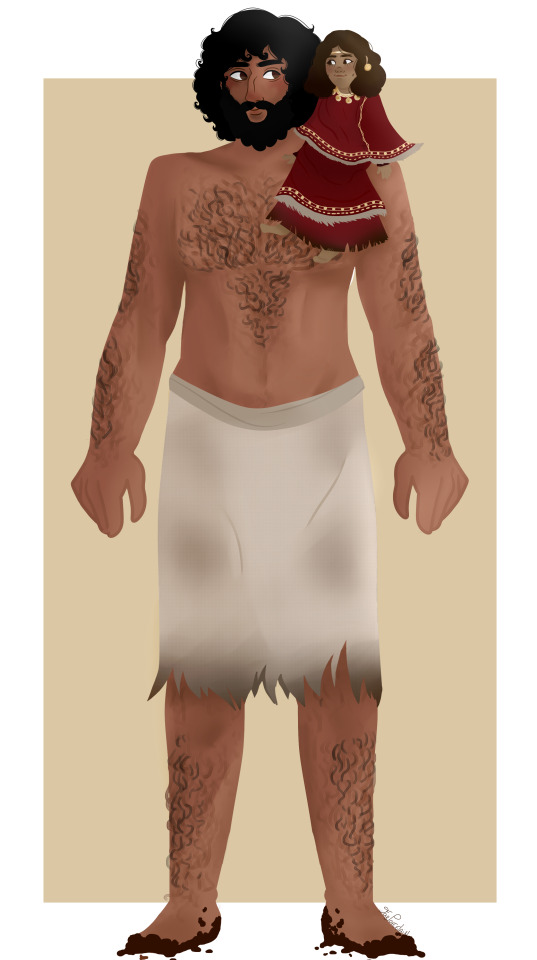
Narul and Ninma courtesy of @faeporcelain
#world building#fantasy#fantasy writing#queer fantasy#worldbuilding#fantasy world#testamentsofthegreensea#narul#fantasy worldbuilding#writing#wip#current wip#kobani questions#fantasy map#if y'all have any questions please ask!#ask#send asks
128 notes
·
View notes
Note
Now that you're back, I can toss some more asks your way! What sort of spices are common in which places? Is any region known for especially spicy food?
Finally actually getting to this! As per usual I will not be answering this in any sort of concise or short manner, so get ready for a long read. Just so this isn't too long, I'm only going to focus on Kishetal and I will discuss the characteristics and some of the more popular ingredients, spices, and dishes in 8 different Kishite cities, each representing a different region of Kishetal.
A Brief Introduction to Kishite Cuisine

1. Shared Traits
Across the Seven (Technically 8, but I'm skipping the Makorian Colonies for now, I might return to them later if people are interested) Kishite regions there are a number of features which remain constant among Kishite culinary traditions. The most immediately recognizable of these features is how food itself is served. Kishite food is always served in bite-sized pieces, whether naturally or whether it is cut up before eating (soups and liquids are the exception to this). Food is eaten with the fingers or else with a spoon. There are no forks or chopsticks or similar utensils. Knives are a rarity as well, as typically it is expected that the food will already be served in pieces or that it can be broken into small pieces with the fingers.
Another shared trait is the "triad" which refers to three types of food which form the bulk of the average person's diet, these being Grain (Wheat, Barley, or Rye), Legumes (Lentils, Chickpeas, Peas, Vetch, Beans, Etc.), and Fat (Most typically olives/olive oil with sheep fat/lard and butter also appearing). The Makurian steppe is unique in that grain does not form the majority of the diet for commoners, with dairy and fats taking precedent.
The last similarity is a heavy reliance on condiments, whether these be seasonings or sauces or something else entirety. It is typical for a Kishite table to have several different kinds of toppings available at any time, what exactly these are will vary by region.
2. Regional Cuisines

(I honestly can't remember if I put a cut here, Tumblr isn't letting me put a cut, so I think I did....sorry if I didn't.)
1. The Red Cedar Mountains : Labisa

The Red Cedar Mountains stretch from the Shabalic Sea in the north nearly to the Sea of Agitu in the south. This region is home to cities like Labisa and Kepfis.
Labisian's are famed for the love of and skill in producing fried foods. The food of Labisa, and in the mountains in general, is viewed by other regions as hearty and heavy. Breads and cakes, sausages, and heavy sauces are well known from the region. Foods are often drizzled with fat. Olives are a popular snack.
Compared to other regions the people of Labisa eat relatively few vegetables. Per capita, the people of the mountains including the commoners, eat more meat than in any other region of Kishetal (typically in the form of sausages (Arashuki) and offal) while eating far less saltwater derived fish. Most meat comes from sheep, with horned-rabbits, goats, and pigs coming close behind. Cattle are largely reserved for the nobility. Game is common fare, though only for those with the time to hunt it or the money to buy it. Insects are very rarely consumed, particularly in the city. Rodents and other small animals, with the exception of the Cedar Squirrel, are rarely eaten.
Aside from a tendency towards rich textures and flavours, Labisan cuisine shows a strong preference for black pepper, which appears in almost all dishes, including desserts. Labisans, perhaps as a way to to counteract the fatty nature of their cuisine, are infamous for their love of vinegar, even more than other regions. It is not unusual for morsels to be dipped into first vinegar and then into various herbs most typically a mixture of parsely, mint, and salt. While herbs (mint, parsley, thyme, basil, coriander, rosemary, etc), aliums (onions and garlic) and acids (vinegar) are common aspects of Labisan seasoning, for the common person, spices are a relative rarity, with the exception of black pepper. Cumin is used at times, as is imported cardamom and cinnamon. Lisikip (Tickling seed), which is similar in nature and effect to the Szechuan peppercorn, is used on occasion. However on the whole Labisan food is not known for being "spicy" and while rich, has a reputation for being relatively bland.
You're unlikely to find much in the way of soups/broths in Labisa, though stews are relatively common. A common stew is Olibiha (aka Hot blood water) , which consists of boiled meat (this will vary but will regardless likely contain organ meat and other less expensive cuts), beets, onions, garlic, and fat of some sort. Traditionally this soup was sold by butchers and at markets at the end of the day as a way to use up unpurchased products. Though its name is typically in reference to the color imparted by the beets, it is not unheard of for blood to be added to the broth, though this form is less popular.
Similar to Olibiha, Chakun, are a popular butcher snack, typically made from pig or lamb skin, fried in its own fat and then seasoned. This is somewhat comparable to "cracklins" or chicharrons. Labisian cuisine in general holds an appreciation for crispy or crunchy textures that other regions do not tend to show.
Fried dough and fried cakes are a popular festival food somewhat similar to what we might associate with a doughnut. These doughnuts or Hasolikipun are typically fried in olive oil or sheep fat. Typically these are then split open and stuffed with a variety of fillings, including fish, offal, and nuts.
Another popular dish is Kipsha, a dense barley cake typically drizzled with honey and citrus and served with toppings like nuts and cheese. Kipsha is both sold on the street and made in houses, often for celebrations. Deserts, aside from fruit, are a relative rarity in Labisa, with Kipsha being perhaps the most well known kind.
Labisa's position on the shore of Lake Shebali, means that the city has access to lake fish, and thus freshwater species are consumed more here than in other regions. Trout and eels are particularly cherished by Kishite consumers, both are typically roasted. The most commonly consumed fish are various species of minnow and shad, which are caught in bulk and often served fried.
Labisan cuisine is strongly influenced by the cuisines of pre-Kishite tribes which existed in the mountains before the arrival of Tamel.
2. The Felic Plain : Seha
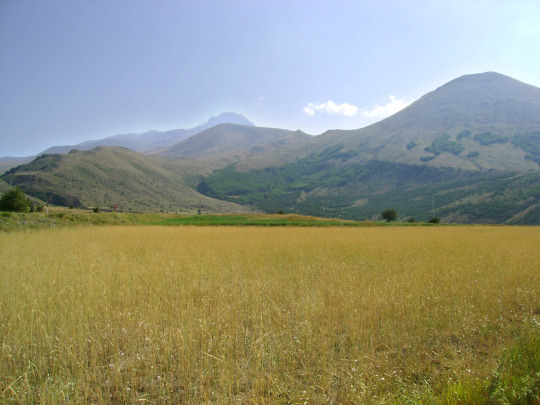
The Felic Plains primarily consist of grassland with occasional patches of deciduous forest. The plains are split by the Aratshin River, and most large settlements can be found on the edge of said river.
The region experiences hot summers and mild but wet winters, which makes the region ideal for farming. As such, the Felic Plains act as the bread-basket of Kishetal. In comparison to the mountains and other regions, the people of Seha eat far more vegetables, and considerably less meat and very little marine protein.
Compared to Labisian cuisine, Sehaic shows a far stronger affinity for spices, with cumin, garlic, lisjir, coriander, cardamom, cinnamon, fennel, and black pepper all appearing regularly in the diet. Felic cuisine in general is the "spiciest" variety, though it is in contention for that tightly with the Kipsian Desert. Mustard and mustard seeds are common ingredients as well, and in the rare instances where meat is eaten, mustard is almost always present.
In addition to their love of spices, Sehaic consumers are infamous for their general disdain for many textures. Sehaic foods have a reputation for being soft, often boiled or stir-fried or else pounded until quiet easy to chew. The cuisine shows an aversion to the crispy, crunchy, and chewy textures.
Sehaic cuisine is known for its heavy use of green vegetables such as lettuce and cabbage, as well as its preference for broths as opposed to thicker stews. Fried food is a relative rarity in Sehaic cuisine, with boiling or else "stir-frying" being far more common.
Cheese is a large part of the diet and is often the condiment of choice, with several different varieties of cheeses being used, all with their own distinct purposes. One variety of heavily salted cheese, is added on to savory dishes as a way of imparting salinity.
Sehaic's are known for drinking their wine and beer with cheese, that is to say they are known for crumbling a particular variety of sheep's cheese into their beverages. After the beverage has been consumed, the resultant cheesy sludge left at the bottom of the bowl is then mixed with honey and nuts and is eaten as a desert. This particular dish is called Birafepaha (Fepaha's Joy).
A common dish is Keriha or "hot green" a dish consisting of dark green leaves, typically spinach boiled with garlic, onion, coriander, and lisjir, in a broth or stock (typically made from fish bones). This may be mixed and cooked down until the liquid has all but evaporated, producing a thick substance which may then be used to dip bread, or if the liquid is not boiled out, it may be eaten as a soup.
While meat is rare it is not entirely unheard of. It is not unusal for a family to keep one or two horned-rabbits, raising them both for meat and for fur. Sheep and cattle are both quite common, as evidenced by the Sehaic love of cheese. Mutton and lamb are often consumed at celebrations. Jirbaha, is a beloved dish consisting of strips of lamb or mutton, cooked with a variety of herbs and spices as well as mustard. This is then wrapped in a cigar like fashion, along with various greens and cheese, in a thin dough and is either fried or baked. This is then typically cut into pieces or else is held in the hand.
Sehaic cuisine shows a deep reverence for freshwater fish, with eels, trout, and sturgeon being reserved for either special occasions or the diets of the wealthy/powerful. Smaller and less valuable fish act as occasional supplements to the common diet.
Insects and gastropods are eaten quite regularly. Locusts, cicadas, grubs, and snails are all common parts of the Sehaic diet, often added to other dishes. The favoured preparation for insects is fried in sesame or olive oil, and then heavily spiced and seasoned. During the harvest season, locusts with lisijir are a popular snack. Other agricultural pests, such as field rats and moles, may also be eaten, typically cooked over a fire.
Kipnakili is a comfort food, often eaten by farmers and river boat drivers, including pirates. It consists of soft cheese, nuts (typically pistachios or walunts or a mix), fruit (typically figs, with the addition of raspberries and sometimes pomegranate), and honey. This mixture is pounded into a fine paste, which is then spread onto flatbread or small round barley cakes, the Felic equivalent to kipsha.
Sehaic cuisine, and Felic cuisine in general, exhibits a strong influence from both native populations and ancient Shabalic cuisine, with some dishes, such as Birafepaha, having roots as far back as the time of Tamel.
3. The Western Coast : Chibal

Pictured Above: The Western Coast near the city-state of Chibal
The Western Coast borders the Green Sea stretching from Bura in the north to Bisabal in the south. The climate here is warm and wet, defined by arid summers and stormy winters, similar to the Felic Plains but more intense on both counts. This has resulted in a culinary tradition with strong seasonal trends.
Room temperature of even cold dishes are popular in the summer months while more hearty soups and broths are popular in the winter and fall.
Chibal, the second largest city in Kishetal after Labisa, has become the most culturally and demographically diverse city in the region, thanks to its prominence as a major trading port. This rich diversity is reflected in Chibalian cuisine, which incorporates elements from Korithian, Apunian, Ikopeshi, Baalkic, Shabalic, and Makorian culinary traditions. This post will focus specifically on dishes which were developed and created in Chibal and not imported.
Due to this sheer variety of influences and sub-cultures it is hard to make any sweeping claims about the nature of Chibalian food. However in general Chibalian food puts an emphasis on the quality of individual ingredients, with Chibalian cooks and diners earning a reputation as being pretentious. As a result, generally Chibalian dishes tend to be less complex, while being fresher. The same applies for seasoning and spice. While not bland like Labisian cuisine, Chibalian cuisine in most instances lacks the complex melanges of spices and seasoning seen in Sehaic food. Rather it should be expected that a Chibalian dish, in most instances, will rely primarily on only one or two items as seasoning, aside from salt.
While legumes and grains(particularly the massive paper thin flatbread known as lakibi) make up the majority of the Chibalian diet, fish and meat also make a significant contribution.
Unsurprisingly a far larger portion of the diets of the people of Chibal and the Western Coast in general are composed of marine elements. Alongside fish and shellfish, the coast is home to many varieties of edible seaweed which appear in a number of dishes, particularly salads and soups. Chibal is additionally famous for its salt, produced in salt beds. This flaky salt is shipped around the entirety of the Green Sea, however the best is kept in Chibal and used to top a variety of dishes. Other popular condiments include cumin seeds, vinegar, olive oil, and a variety of Korithian fish sauce called wydram.
Bikerebi (water-leaf water) is a traditional soup, often served as a starter or side dish. It features a broth typically made from small fish or shrimp and various types of green sea algae. While the broth can be enjoyed on its own, it is usually enhanced with additional ingredients like salt, lisijir, vinegar, black pepper, and dill. A popular variation, known as Kibikerebi, involves crumbling stale or dried bread into the broth, creating a paste-like porridge. This heartier version is commonly eaten by fishermen and laborers as their first meal of the day.
Ovens are typically reserved only for bread, with roasted or baked dishes being relatively rare (though roasted meats and seafoods may be eaten on special occasions). Rather the majority of Chibalian food is boiled, pickled, sauteed, fried, or dried. Chibal is one of the only places in Kishetal with a penchant, particularly in the warmer months, for eating raw foods. This includes fruits and vegetables along with fish and shellfish.
One famed, though expensive dish is Sibizu aka "cold-fish" typically made from white flesh fish, such as sea bass, flounder, mackerel, and scallops. Tuna species and swordfish are considered more luxurious, and are preferred by the wealthy. Fish meat is cut into thin pieces and covered in salt and herbs, typically dill. This can be done either in a bowl or pot or spread onto a tray or flat stone. This is then allowed to sit, typically for around 2 hours. After this the fish is removed from salt and rinsed in a mixture of water and vinegar, typically three times. After this the fish is served with a olive oil as well as various other toppings. In certain circumstances the fish may be served ontop of ice or snow as this is believed to improve the freshness and flavour.
Uncooked fish more often takes the form of pickled fish, left in a mixture of vinegar, salt, and herbs. Oysters and clams are regularly eaten raw, though they may also be shucked and added to soups or stews or on rare occasion baked.
Chibalian cuisine is defined by an intense interest in texture with the perfect meal preferable containing elements which are soft, slimy, creamy, crunchy, and chewy. For the last category cephalopods such as octopus and squid as well as stewed cartilage are popular ingredients.
Vegetables are typically served as sides, favored for their textural components rather than their flavor. Crisp lettuce or crunchy asparagus/cabbage often appear as part of broader meals, but are often ignored. Salads composed of lettuce, spinach, cabbage, and other greens including seaweed are often served at the end of the meal, after fruit.
Chibal is one of the only cities where pigs are consumed at a greater rate than sheep or goats, though still not as much as the horned-rabbit. Sausages, tripe, offal, and chops are all eaten regularly along with products made from the skin and blood.
4. The Northern Coast/Sheprian Forest: Shepra
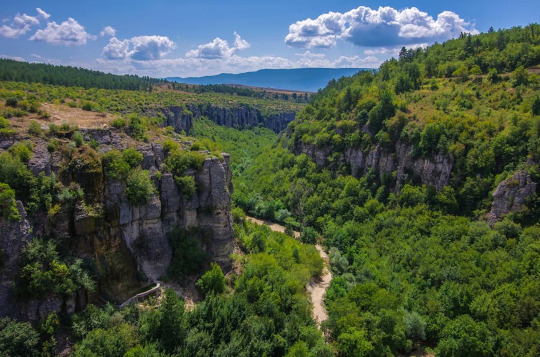
The Sheprian forest in the northern part of Kishetal is primarily composed of deciduous trees with occasional conifer patches at areas with higher elevations. Common trees include oak, chestnut, birch, hornbeam, black pine, cedar, juniper, and beech.
The city of Shepra lies on the northern coast of Kishetal at the Delta of the Pesha River. The surrounding area is heavily forested. For this reason, Shepra is famed for the quality of its hunters and of its game. Sheprians are additionally famed for the quality of their wheat, said to be sweeter and more delicate than the more abundant Felic varieties. Sheprian bakers are famed for their fluffy yeasted breads, typically favouring wheat rather than the barley which reigns supreme in southern regions. As a result, Sheprian wheat bread has been called, Kipchilu or Bread of the Gods. Sheprian bread is so popular that it or at the very least, Sheprian wheat flour, may be shipped hundreds of miles by foot, donkey, and ship to the courts of cities like Labisa and Chibal where it is treated with great reverence, often as a desert. Sheprian bread is often added to sacrifices alongside meat and fat meant for Great Spirits and Gods, either left outside on special alters (for Great Spirits) or burnt (for Gods).
Shepra boasts a vast collection of communal ovens, located near the town's center alongside the central grain store. By paying taxes, serving in the city guard, or fulfilling other civic duties, a Sheprian household earns a clay tablet that grants them the right to use one of the ovens for the season. However, a persistent issue plagues the town: a group of counterfeiters producing fake tablets. If someone is caught using a counterfeit tablet, they face punishment through debt slavery for up to three years, usually tasked with cleaning and maintaining the ovens. The problem is so significant that the Sheprian King has established a dedicated bureaucratic office, the Chief of Ovens, to address it (not to be confused with the Chief of Bread, who oversees the baking of bread and the storage of grains within the Palatial Complex). Those found guilty of intentionally damaging an oven or stealing an oven tablet receive death.
Some families also own smaller ceramic ovens or braziers, which can be used inside the house or, more commonly, on the flat roofs. In addition to these, there are professional bakers who either own their own ovens or petition for special tablets that designate them as bakers, granting them unrestricted access to the communal ovens. The abundance of ovens, along with ample timber and coal, has shaped a cuisine centered around braising, roasting, and baking. Sheprian food often involves long, slow cooking times, resulting in dishes celebrated for their rich flavors but often criticized for their lackluster colors and textures. Stews and gravies play a central role in Sheprian cuisine.
Unsurprisingly, bread is a staple of Sheprian meals, with 126 distinct varieties produced in the region, 42 of which are entirely unique to that region, and 13 exclusive to the city of Shepra. One notable variety, ruyi (literally "plate"), is a large, dry, and dense flatbread typically made from a mixture of wheat and barley. Families usually bake ruyi in bulk every four to five days. To prevent spoilage, it is cooked to a cracker-like consistency, making it hard and tasteless in its natural state. The flatbread is then wrapped in cloth and stored for use as flatware during meals.
Food is served directly onto the ruyi, accompanied by vinegar, oil, cheese, and various sauces and toppings, including a chickpea and garlic paste known as Babilkipi. After the meal, once the bread has absorbed the liquids, it is either cut or broken into pieces and eaten. Ruyi is a common presence at most Sheprian meals, and it is not unusual for families to consume multiple types of bread, including ruyi, in a single meal.
Perhaps due to their preference for hearty, fatty meals—possibly to counter the cold winters—Sheprians, along with Labisians, are often stereotyped as being somewhat heavier than other Kishite groups. This trait is not viewed negatively; in fact, many consider both Sheprian men and women among the most attractive in Kishetal.
As previously mentioned, game such as venison and boar is consumed regularly in Shepria, alongside goat and pork. However, horned rabbits are rarely kept, making them a minor part of the Sheprian diet. Cattle and sheep are similarly uncommon, largely due to the dense, ancient forests that dominate the region, which are not well-suited to pastoralism. For this same reason the people of Shepria have historically had little use for horses and cavalry.
Despite being located right next to the Shabalic Sea, seafood plays a relatively minor role in the Sheprian diet. Ironically, most of the prized Sheprian catch is sold to merchants and traders from cities like Chibal and Seha. The exception is shellfish, which the Sheprians consume in large quantities. The outskirts of the city are dotted with massive shell middens, some of which have become homes to various spirits and, on occasion, even monsters.
Sheprians use a wide range of spices and herbs, but their cuisine is particularly known for its heavy reliance on oregano, garlic, juniper, turmeric, and even imported ginger and cinnamon. To add heat to their dishes, Sheprians favor both horseradish and radishes, especially a specific breed of radish renowned for its intensity. This radish is often sliced thinly and used as a condiment. In other Kishite regions, bards and comedic poets like to tell exaggerated tales of Sheprian children wandering the streets and hills, gnawing on mustard seeds, radishes, and whole pieces of horseradish. While these stories are clearly hyperbolic, there is some truth to the Sheprian preference for this type of heat. Interestingly, despite their love for pungent flavors, Sheprians rarely use black pepper or lisijir in their cooking.
Kilakela, or "Field and Forest," refers to a category of layered dishes that might best be described as casseroles. These dishes typically involve finely chopped meat—often pork or various game birds—combined with additional fat, usually lard or olive oil, along with root vegetables like beets and parsnips, onions, an array of spices, wine, and sometimes honey. The mixture is placed in a special clay vessel and buried under coals at the back of the oven, where it cooks slowly throughout the day, allowing the ingredients to become tender and flavors to meld. Once the day's baking and other cooking tasks are complete, the vessel is retrieved, and the resulting stew or casserole is served atop ruyi. A variation of Kilakela, known as Kilala, excludes meat and is instead a vegetable stew, often fortified with chickpeas or lentils to add heartiness.
Northerners are one of the few groups which consume mushrooms on a regular basis, evidently not holding the same fears and superstitions as their southern cousins. One dish banalligu, sees mushrooms, doused in vinegar and olive oil, cooked on a skewer often with various other ingredients, depending on what is available such as whole cloves of garlic, small onions, vegetables including carrots, beets, and cabbage, game (most often duck or venison) or pork belly, and sometimes figs. This is cooked directly on the dying coals of the oven, charring the mushrooms and other components. After cooking the ingredients are removed from the skewer and may either be eaten as is or be wrapped in thin flatbread similar to Chibalic lakibi before being topped with a variety of ingredients.
Sheprian food shows strong influence from more recent Shabalic trends, with both favouring stews and hearty meals typically composed of many ingredients.
5. The Southern coast: Kotsa

The Southern Coast consists of three regions; the southern deciduous forest, the scrubland, and the plains. The climate in the south is quite warm, with summers being hot and dry and winters mild in both temperature and rainfall. On rare occasions, the southern coast may experience heavy snowfall.
Major cities are sparse however, many villages dot the southern coast, many of these villages rely on piracy, preying primarily on Apunian and Jezaani ships traveling to and from the Western Coast. The largest of the southern cities is Kotsa, founded on the ruins of a pre-Kishite civilization.
Kotsa is famed as the primary home of the Shobiashkun, a particular brand of priests and sages. While these priests are superficially said to serve the Deity of Writing and Knowledge, Shashuma (They are a minority, the largest temples in Kotsa belong to the storm God, Kotomah), in actuality this small collection of scholars and philosophers focus their interests on the Shobiash, the River of Creation and Time, thus looking behind the Heavenly Gods. A Shobiashku looks for patterns in existence, and seeks meaning and purpose in these patterns, typically through meditation or sometimes through drug assisted trances. The Shobiashku forgo sex, meat, and honey, save for in those instances in which those things may help with their musings. Numerous treatises pertaining to the nature of the universe, death, magic, and civil order have been produced by this small sect. Despite the fact that the Shobiashkun are a relatively small group, little more than 50 individuals at any time, they have had a major effect on the cuisine of Kotsa and the surrounding region.
As a result Kotsa is one of the few regions with a significant vegetarian population, particularly among the learned elite.
Kotsa has one of the most defined elite cuisines, separated from that of the commoners not only by the ingredients used, but also by how that food is prepared and presented. Particularly among the nobility of Kotsa, eating and food is viewed with a level of spiritual and medicinal reverence. At the palatial court for example the supposed symbolism and medicinal boon of each dish is announced each time one of the many small courses is presented, with some courses comprising of only a couple of bites of food. At a Ceremonial Kotsian Banquet, bread is always served first, unseasoned and alone. Most often this is a dense barley bread, its hearty nature meant to represent the soil and stone. Next comes water, or more rarely, beer. This is followed by a number of dishes with various representations; A charred onion spiced with lisijir and ginger (Hagugura) to represent fire, a small cake made from sheep’s cheese and wheatberries to represent the fields (Jiribikip), a piece of roasted turnip spiced with cardamom and salt to represent the walls of the city (Elmuhi), etc. Wine is drunk sparingly throughout the meal and often watered down to an extreme level (sometimes to the equivalent of 16 parts water to one part wine.) In these particular dishes, spice is used sparingly as it is believed that using too many additional ingredients may in some way dampen the medicinal properties of the dish. Of course, such rigid dining is mostly indicative of ceremonial affairs or of the most rigidly traditional nobles, it does not represent all cuisine.
Outside of the world of ceremonial dining, Kotsian cuisine is known for its freshness and its love of spices, though its relative disdain for heat (lisijir, horseradish, radish, etc.) Cardamom, ginger, garlic, bay, turmeric, and saffron all appear regularly in Kotsian dishes. The South of Kishetal is famed as being one of the only places west of Sinria to have successfully planted and cultivated the cinnamon tree, with five small groves near Kotsa, accounting for nearly all Kishite Cinnamon. Cinnamon features in both savory and sweet dishes and may even be added to wine and beer. As a result, cinnamon appears in much of Kotsian cooking. One popular dessert, Jakeresha consists of a cake made from dates, cheese, and flour, wrapped in several layers of thin dough. This is then heavily seasoned in a mixture of ground cinnamon, honey, and sesame seeds. The savory version of this dish, Jakereshu replaces the dates typically with a mixture of mashed chickpeas and fava beans, and replaces the honey usually with oil, while retaining the heavy use of cinnamon.
Kotsian food is noteworthy among Kishite cuisines for its fragrance, due to its heavy use of aromatics. It is said the ruler of the country of Apuna, the Fapacha, once hired Kotsian cooks to work in his kitchens, only so that the smell of Kotsian food could perfume his halls.
Kotsian food doesn't seem to demonstrate any particular tendencies or preferences when it comes to cooking styles, with baking, sautéing, frying, and boiling all appearing. Aside from the Makurian Steppe region, and is the most distinct from other Kishite styles. In terms of preparation and ingredients, Kotsian and southern cuisine in general seems to have more in common with that of foreign lands like Jezaan and even Apuna, than it does with places like Labisa or Seha.
While vinegar does appear, it and its use in pickling and preservation are far less common than in other regions. Dried foods are common however, with fruits and vegetables and fish often dried on reed mats as a way to intensify flavor.
For the purpose in general the treatment of meat within the Kotisan diet is similar to that of Seha, with meat being eaten only on rare occasions. When meat is served, it is typically done simply, roasted or boiled and cut into thin pieces. Sheep are the most common form of livestock, with significant cattle herds also being present. Horned-rabbits are relatively common, though not to the extent of the mountainous regions. Pigs are all but absent. Due to the relatively arid environment, game is also a relatively rare part of the diet, with the exception of gazelle.
Kotsians, and the south in general are famed for their love of yogurt, or Ishjir, often eaten as a mid-day meal, mixed with fruit or honey. Yogurt may also function as a condiment of sorts, with a variety of sauces comprised of yogurt mixed with various herbs and spices, utilized depending on the circumstance.
Fish is eaten regularly, particularly fish like seabream, which is often salted and left to dry. This dried fish is then stored and may be rehydrated in soups or else used as a travel food.
One dish that is unique to the region but that is quickly spreading both to other regions of Kishetal and to other parts of the Green Sea is Talakili which while its name literally translates to "flat bread" is actually more comparable to pasta, typically made from wheat flour mixed with water and oil, rolled flat, cut into either small squares or circles and then boiled and served with a variety of sauces. Talakili with salt, cheese, and cinnamon is a popular comfort food among Kotsian children.
6. The Kipsian Desert : Kipsa

The Kipsian Desert, with its rocky terrain and sparse vegetation, is the least populated regions of Kishetal, and is also the region with the largest pre-Kishite genetic and cultural influence. As a result, the Kipsian dialect of Kishite, is often quite difficult for other Kishites to understand as it is heavily influenced by other languages such as Mageryu and Duluqi. Despite these challenges, the city of Kipsa, the largest in the region, has cultivated a distinctive culinary tradition that reflects its unique environment and cultural heritage. Kipsa is well known for the ferocity of its warriors and as the center of rakeshim production. Rakeshim is a fabric, woven from thin strands of gold interwoven with either linen or silk. Its construction is incredibly complex and the secret to its creation, a jealously guarded secret among the five families which produce it.
Central to Kipsian cuisine is the use of local herbs and spices, hearty grains, and a pronounced affinity for sweetness. A defining feature of Kipsian cooking is the use of large subterranean ovens called Bahasayu. The Bahasayu enables slow, even cooking, ideal for preparing the region’s staple dishes. These ovens, essential for traditional cooking, are found in nearly every home, typical appearing either in courtyards or in front of homes. On rare occasions two or more homes may share one Bahasayu. When a couple marries, it is customary for them to dig a Bahasayu as part of claiming their new home. Additionally, in some cases, the remains of deceased ancestors are interred beneath these ovens, after their customary exposure to the elements, linking the living with their ancestors. Because these ovens are so central to domestic life, they are often the target of curses. A disgruntled Kipsian may place a or crack a curse tablet over a rival’s Bahasayu in order to bring them misfortune.
Kipsian cuisine uses many of the same spices and herbs as their Kotsian cousins, though with a distinct preference from cumin and coriander over cinnamon.
Due to the arid environment and lack of major irrigation, vegetable cultivation is relatively sparse, and what vegetables and fruits are available are often preserved in some way. Fresh vegetables are a luxury typically reserved for the wealthy. Rather Kipsian cuisine has come to rely on a particularly robust strain of barley. While it is able to withstand the dry and hot climate, this barley produces an often chewy and unpleasant product. As a result, Kipsian cuisine is often maligned for the poor quality of its bread and those that can afford it prefer to import wheat from the Felic Plains and Kotsa. One use of this otherwise unpleasant barley is Takuriha (stemming from the Duluqi language, meaning “beer soup”), a soup made from fermented grains mixed with yogurt and herbs and spices. The resulting dish is served cool or room temperature and is typically eaten after the sun has set. The soup is mildly alcoholic. Kipuhi, is a salad also featuring barley pearls mixed with chopped herbs, olive oil, and regalu juice. This may be supplemented with dried or shredded meats as well as chickpeas or other vegetables in order to create a more complete and hearty meal.
Kelami, a local variety of flatbread, is historically baked on hot stones or now more commonly, on the roof of the bahasayu. To counteract the quality of the barley, it is typically served with various dips and spreads, such as Muhamara, a rich paste made from roasted chickpeas, walnuts, and olive oil.
Cucumbers are beloved as a snack, particularly during the hotter season, as they are thought to cool the body. They are served typically in salad composed of cucumber, mint, vinegar, and garlic. When fresh cucumbers are not available, they are pickled in vinegar, alongside various herbs and spices. Pickled vegetables and meats, as well as bird’s eggs and fruits, are integral the Kipsian diet. Pickled vegetables and herbs often act as condiments of sorts, placed on the table to be added to other dishes. Pickled foods are so common that they typically act in place of vinegar as a topping.
Meat, though not a daily staple, is carefully prepared when used. Goats are the primary source of protein. One dish, Ishukjiraru, is a dish made with intentionally spoiled meat. Goat meat is packed in herbs, vinegar, and fat (typically rendered goat fat) inside of a large jar and is allowed to sit, sometimes for weeks at a time. The resulting product is cleaned and then utilized in a number of dishes, including stews and as a shredded meat added to salads and on flatbreads. The taste is quite sour and funky and can be an acquired taste. Kipsiansalso raise a unique breed of horned-rabbit well-suited to the desert environment. Heards of these wiry creatures can be seen roaming from bush to bush, guided by desert shepherds. Gukeki (from the Mageryu for “gift”), is served for special occasions, as its use of fresh vegetables make it a relative luxury. It is a vegetable stew made with ingredients like eggplant and onions, which is cooked in large clay pots and may also include the shredded goat, spinach, and other ingredients.
Honey is a prominent ingredient in Kipsian cuisine, the Kipsa itself being famed for its many hives. It is used as a condiment in various forms, including Habazibi, a salted and spiced variety with a hint of Lisijir for subtle heat. One result of this abundance of honey is the Kipsian love of mead and honeyed wine or beer. Kipsians have a reputation as heavy drinkers, drinking more of these beverages than any other Kishite people. The god of beer, Fepaha, is honored, and many banquets are dedicated to celebrating this drink.
Kipsians have a notable sweet tooth, with foods often heavily sweetened with honey or date syrup. Desserts such as Kepechi (the Kipsian equivalent of kipsha), barley cakes soaked in a honey and regalu syrup, and Gelukepi, a sweet treat made from slow-cooked fruits (primarily dates and figs), are popular and enjoyed with a strong tea made from mint and coriander, with “laughing leaf” a mild intoxicant, also occasionally added.
Kipsian food shows a heavy influence from indigenous cuisines.
7. The Makurian Steppe: Shebal

The Makurian steppe is massive, spreading over most of western Macia. Only a tiny sliver of that vast extent falls in Kishetal. Trees are almost entirely absent. Vast expanses of grass-covered hills define the area. To the north of the steppe is the Shabalic forest, and to the south is the Jezaaic desert. The largest of the Makurian cities is Shebal, once the homeland of the Ugri Tribe, the city still is the target of many repeated attacks by Makurian tribes. Despite its remoteness, silver mines and soil rich in gems, have made Shebal uncharacteristically rich, particularly considering that it is the least populous of all the regional "capitals".
Perhaps unsurprisingly, Shebalian cuisine takes heavy inspiration from that of the western Makurian tribes. This translates to a cuisine heavily built on the consumption of meat and dairy, and a prevalence towards soups and stews. It is said derisively of the Shebalians, that they eat horse meat stew for dinner and horse bone soup for dessert. It is true that the Shebalians, and the people of the east in general, are the only region of Kishetal in which horse and donkey/ass are eaten regularly. Meat, cheese, and milk from these animals are eaten in large quantities. Despite this the Shebalians are known for their deep connection with the horses, famed as charioteers and riders. The slaughtering of a horse is a sober affair, typically attended to by a priest of the god Ikeshpaha (the God of wealth and the steppe) and undertaken with the utmost care. The first dish to be prepared from the horse or ass, is Jabolibi a thick porridge consisting of blood as well as either wheat berries or rice. This is typically consumed by warriors, kings, and pregnant women.
Shebalians and eastern Kishites in general eat more dairy than any other Kishites, with cheese, yogurt, butter, milk, and various fermented curd products accounting for much of the diet. Jiraba is a variety of curd, first heavily fermented and then dried until hard and crunchy. This is then crushed and sprinkled on other dishes.
Fresh vegetables are rare as the environment is ill-suited to agricultural, as a result most vegetables are imported from the west or from lands to the south. As a result of this, green vegetables with short shelf-lives are highly rare and are seen as a delicacy. Root vegetables like carrots, beets, turnips, and parsnips are common and appear often in Shebalian dishes or may be served as a side. Shebalians cuisine does make use of lentils as their primary legume of choice.
One food item unique to Shebal and the surrounding area, is rice. Rice is an import from the east, typically carried over vast miles by traders from Sinria, Mu, and other places. The palace buys vast quantities of rice and use it often as a form of payment. Rice is steamed and served with meat, butter, and spices, or else may be added to broths to make them hearty and filling.
The Origins of Rice in Shebal
According to legend the origins of rice in Shebal come from not long after the foundation of Kishetal by the demigod Tamel. The first king of Shebal, then a vassal of Tamel, was Haman the Thrice-Bearded. Haman had one son, Hiru the Brilliant. Said to be blessed with all the radiance of the silver of the steppe, it is typically agreed among scholars and poets that Hiru was the most beautiful of all Kishites. His statues and images can be found throughout Kishetal, and particularly in the east. Said to have the strength and size of a great warrior, and the face of a lovely maiden, many flocked to see Hiru. Men and women alike from countless nameless land, travelled many miles, bearing gifts of gold and silver, perfume and spice, to marry or just to sit with the beautiful prince. Even spirits and forestfolks came before him, the dragon, Eker, offered the entirety of the land of Ukat just to have the beautiful prince in his home. Those that were not cowed by his beauty, plead and promised him wealth, love, and many children. They sang of his beauty. Hiru, however refused all gifts, and turned away all suitors, for all they could see was his beauty.
One day the Sinrian King, Jiparitu (Juparvi in his own tongue) came to play his own card, wishing for Hiru to be his lover and cupholder. Jiparitu, who the called The Mount of Rendigra (A Sinrian Thunder God), was the son of the Demigod, Ranaya. He was broad as an ox, the hands like bear paws. He was great warrior who had killed his 5 older brothers in battle for the right to sit upon the throne of his father's city. He presented the youth with the three elephants, ten rolls of silk, five pounds of saffron, and three golden statues, each as large as a man. Yet, Hiru refused. Enraged, Jiparitu stormed from the palace, only to return later that night, along with his plantbrew. They drugged Hiru and ferried him away, over the steppe and the high mountain, to his palace in Sinria. There he bedecked the prince in flowers and silks, and cherished his beauty, and made him his lover, though unwilling. But soon he grew jealous as he saw the looks of awe and lust on the faces of his servants and court. And so he had Hiru's face, bound tight in cords of silk and wool, locked with chains of bronze and copper, so that none could look upon his face but he. He ordered that his body be covered in filth and dressed , save for when it came time for the king to look upon him, so that no other could see his treasure. He then locked the prince in a tower of white stone and gold.
When King Haman heard of his son's abduction, he marched, joined by his brother's the rulers of Bur and Kutar, and 67 of Hiru's former suitors and their men to the lands of king Jiparitu. There they laid siege to the castle for 67 days, and on each day, it is said that one of the suitors was killed.
While the siege raged outside Hiru remained trapped in his tower, his only company being wicked Jiparitu and the slave, Safeniri (Savanri in her own tongue). Both could enter the tower only by an entrance, hidden so that none but they could find it. Safeniri, a peasant girl, born of two rice farmers, fed him scraps of the jungle fowl (chicken), crusts of bread, and green leaves, for these are all that Jiparitu permitted he be fed, lest the beauty of his body be marred by fat. And yet, in secret, she also brought to him, a porridge, made from rice, cinnamon, milk, waweshi (sugar, native to the kingdoms of Sinria, but quite rare in Kishetal) and coconut which she called kerumipiya (Kerumpaja in her native tongue) as well as bowls of rice and butter, for this is all that she, a slave, could afford. She had never seen Hiru's face, and knew nothing of his famed beauty. Hiru longed for her company, and though he had never seen her face, blinded as he was by the cloth around his face, he began to fall in love with her, and she with him.
When word of the siege reached the ears of Hiru and Safeniri, together they concocted a plan to free Hiru and to return him to his father. Outside of the tower, in great bunches, grew "laughing leaf" which dulls the mind and weakens the balance. Its effects are strong but its taste is bitter. When next Jiparitu came into his tower to gaze upon his treasure, Safeniri waited there with Hiru. As always Jiparitu insisted that his guards wait outside of the tower, lest they recieve the pleasure of gazing upon Hiru's beauty. It was only as Jiparitu ordered the clothes removed and the filth wiped away, that Safeniri finally saw him truly. And though she was awed, she had already long since fell in the love with the imprisoned prince.
Though still handsome beyond measure, his face had been marked by seven cuts where the cloth had been bound too tight, and from then on he was known as Hiru of the Seven Scars. While Jiparitu marveled over his captive, Safeniri approached him and offered him a bowl of the kerumipiya, one which she had tainted with the laughing leaf, its bitterness covered by the sweet sugar and milk. The king ate and as he ate, he became joyous and wild. So wild that he spilled the rice upon his fine clothes. Safeniri then suggested that the king undress, less his expensive clothing be ruined by his rice. And so he did, undressed down to his undergarments, his heavy robe falling at his feet. And Safeniri sang and pounded upon the bottom of the clay pot like a drum. Saferniri then opened the door, beyond which were the stairs which spiralled up the tower. Jiparitu danced, entranced by her beautiful voice. His feet became tangled in his discarded robe, and his mind too clouded to stop himself, he fell, tumbling down the hundred stairs of the tower, until he lie at the bottom, dead.
Saferniri then took the kings discarded robe, and tore the jewels and gold from it, she smeared it with filth and grime, until it looked like a beggars cape. This she covered Hiru in and guided him down the tower and through the secret entrance. When they people looked, they saw only a peasant woman, guiding a beggar, his face hidden.
She lead him past the city walls, to where his father and uncles sat in their camp, bereft, for the last of the suitors had been slain by arrow and sling. King Haman was so joyous upon seeing his son that he fell to his knees and sang praises to the gods of Kishetal and the Steppe. And yet he was shocked, when the first words that Hiru spoke to him, were to say that he had found a wife.
Haman was scandalized by the suggestion that his son, the prince, would marry a slave girl. He demanded to know what Safeniri’s family could possibly offer to warrant such a union with one as magnificent and beautiful as Hiru when all other suitors had offered gold, silver, and land. Love and rice, was all that Safeniri could offer. Haman was unimpressed by this seemingly simple answer.
Determined to prove her worth, Safeniri crept back into the city, and returned to her home. With the help of her parents, prepared a pot of kerumipiya, the finest ever made. They used fruit plucked from the trees, milk fresh from the cow, and sugar as white as snow. When she presented this exceptional dish to Haman and his brothers, they were astonished by its exquisite taste, unlike anything they had ever eaten.
Haman, along with his brothers, was deeply moved by the dish and by Hiru's story of Safeniri's cunning and dedication. Relenting, he agreed that a spouse capable of creating such a remarkable meal deserved to be wed to his son. However, he imposed one condition: Safeniri was to see that Hiru was presented with a bowl of kerumipiya every day until he was guided into the next life.
The wedding that followed was a grand celebration. To meet Haman's stipulation, rice and other eastern goods were brought from distant lands to Shebal. Soon, rice, and particularly kerumipiya, became symbols of wealth and love, often featured at weddings. When Haman passed away, Hiru ascended to the throne and ruled with wisdom and kindness, particularly towards slaves and captives. Safeniri honored her promise, and upon Hiru’s death, it was said that she joined him on the very same day.
Many stories of both Hiru and Safeniri now fill Kishite Folklore, with the wisdom of Safeniri being particularly renowned. Many queens and princesses, particularly those in the east of Kishetal may take the title Lusafeniri or "Of Safeniri/ Safeniri-Like" in order to emphasis their wisdom and prowess.
In Shebal today, while still reliant on imported rice, kerumipiya has adapted to local ingredients. Instead of sugar and coconut, it’s sweetened with honey and flavored with dried fruits such as figs and apricots, and often uses horse or donkey milk as opposed to cow milk.
A sprinkle of ground cinnamon might be added for extra flavor. Kerumipiya is commonly eaten as a dessert, or during special occasions. It remains a popular dish at weddings and many lovesick youths may try to woe potential partners with a steaming bowl.
Rice is often used a sacrifice to the god of wealth, Ikeshpaha, its many grains believed to represent plenty. Rice sprinkled around the house is believed to ward of wicked spirits, and disease as it is believed that it "absorbs" evil.
One benefit of its eastern location is that Shebal and the surrounding cities are often the first to receive exotic spices carried from Mu and Sinria, often at far less cost than their western cousins. This is led to a cousin, which well simplistic at first glance, is highly complex in its flavors. Soups such as the goat-based, Habisichiarsoni (The Soup that Awakens the Sleeping God) may use dozens of different spices including turmeric, cumin, pepper (long and black), mustard, cardamom, lime leaf, etc, in a complex and masterful way. Easterners who journey to the west, well excited by the access to wheat and vegetables, often bemoan the perceived blandness, with only Sehaic food being seen as "properly spiced". Shebalian cuisine's heavy use of lisijir and other spices make it perhaps the only cuisine which could be considered "spicy" by Earthly standards.
Another quirk of Shebalian cuisine and of the steppe is that it is the only region which prefers butter as its primary fat, this has earned easterners the somewhat derogatory nickname "butter-eaters" by their western cousins, where the use of butter is often viewed as barbaric. Butter is often used as a condiment, melted and added to soups, bread or other dishes.
The diet of the Shebalians is the least reliant on bread of any Kishite culture, with some families going several days without eating bread. When bread is consumed, it often uses rye, rather than the barley or wheat preferred on the other side of the mountains. The result is dense and nutty and works well with the fatty and meaty cuisine of the steppe. Errikili is a knotted bread made from rye flour, often noted for its somewhat phallic appearance. It is typically used to dip in soups, or else may be eaten with butter and imported spices.
Talakili has become increasingly common in Shebalian cuisine, imported from Kotsa. In Shebal it is often added to soups and broths and is thicker and heartier then its southern equivalent. One particular rendition of Shebalian Talakili called Irkipikiki (literally "pregnant thing") is stuffed with meat and cheese, somewhat similar to a ravioli.
While still identifiably Kishite in its presentation and cooking styles, the components of Shebalian cuisine are largely foreign. Its base ingredients are of the Makurian steppe, while its use of spice shows heavy influence from the lands of the Great Southern Kingdoms (Baban and Ukkaria), Sinria, and even lands far to the east like Pya, Mu, and Xianti.
And that's that! A pretty barebones explanation of the differences between the cuisines of different parts of Kishetal. Let me know if you have any other questions about any of these cuisines/dishes! Maybe one day I'll do something similar with the regional cuisines of places like Korithia, Shabala, Pyria, and Apuna.
Taglist (let me know if you want to be added or removed!)
illarian-rambling, @mk-writes-stuff, @kaylinalexanderbooks, @willtheweaver, @patternwelded-quill
@elsie-writes, @elizaellwrites, @the-ellia-west, @the-octic-scribe, @the-golden-comet
@finickyfelix, @theprissythumbelina, @autism-purgatory, @diabolical-blue , @tildeathiwillwrite
@katenewmanwrites, @leahnardo-da-veggie, @paeliae-occasionally, @melpomene-grey
@drchenquill, @marlowethelibrarian, @phoenixradiant, @pluttskutt
@dyrewrites, @unrepentantcheeseaddict, @roach-pizza, @rivenantiqnerd, @pluppsauthor
@flaneurarbiter, @dezerex, @axl-ul, @surroundedbypearls
@treesandwords, @the-golden-comet
#testamentsofthegreensea#writeblr#worldbuilding#fantasy world#writing#fantasy writing#world building#fantasy food#fantasy#creative writing
29 notes
·
View notes
Text
I spent 20 minutes smacking a plastic bottle against the counter trying to come with up with the onomatopoeia version of the word "bop" for one of the languages of my WIP.
Is it ever actually gonna be relevant to the story? No.
Was it for some random little piece of a character's lore that no one but me and a couple people are ever gonna see? Yes.
#writeblr#writing#conlang#fantasy writing#creative writing#writer#fantasy world#testamentsofthegreensea#fantasy#useless lore#worldbuilding
76 notes
·
View notes
Text
A Recipe for Daropaka and a Korithian Meal

Hello everyone! (More than) A few days ago I said that, as a way to celebrate reaching 200 followers that I would make one of the dishes from the setting of my WIP. I did something similar for 100 followers which you can see here. This time around I put up a poll to see what dish you all would like to see based on the favorite dishes of my OCs. You voted for Otilia's favorite food, a cheesecake (Daropaka) from the land of Korithia.
However because I felt a bit bad about how long it took me to get to this and because I needed to make something for dinner anyway, I prepared an entire Korithian meal, specifically the last dinner Otilia ate before she left her homeland.
I will give a short description and some history for each component of the meal and will also provide recipes. These recipes come specifically from the Korithian city-state of Kalmanati.
BIG POST ALERT

The diet of Korithians is highly reliant on cereals, grapes, and olives. Barley is the most commonly consumed cereal and is used in the bread of most commoners. However, Kalmanati is famed for the quality of its wheat, and particularly among the wealthy, wheat is the cereal grain of choice. Legumes (Lentils, peas, vetch, beans, etc), vegetables (Cabbage, carrots, lettuce, seaweeds, artichokes, asparagus, onions, garlic, cucumber, beets, parsnips, etc.) and fruits/nuts (pomegranate, almond, fig, pear, plum, apple, dates, chestnuts, beechnuts, walnuts, rilogabo(Kishite regalu "Sunfruit"), bokigabo (Kishite botagalu "Northern fruit), etc.) also make up a significant portion of the Korithian diet, with meat (Cattle, lamb, pig, goat, goose, duck, horned-rabbit, game) and fish typically filling a relatively minor role except for in the diets of wealthy individuals (like Otilia).
Vinegar, oil, and garlic appear in almost all Korithian dishes and are an essential aspect of the Korithian palate.
Recipes below the cut!
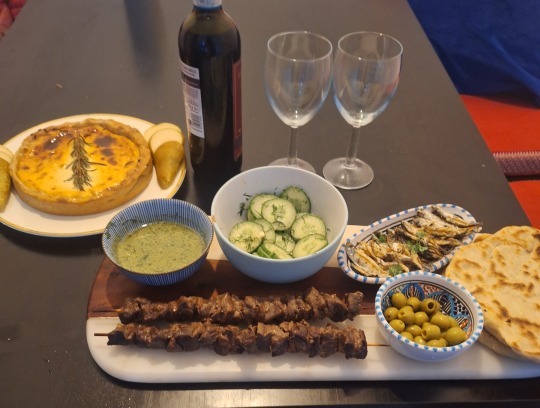
The components of the meal are as follows:
Daropaka: (Korithian: Daro = cheese, paka = cake)
Karunbarono: (Korithian: Karun = meat, baro = fire (barono = roasted) )
Pasrosi Diki: (Korithian: Pasrosi = fish(es), Diki = small)
Psampisa : (Korithian: Psamsa = bread, episa = flat)
Akuraros : (Korithian: Akuraros = cucumber)
Ewisasi : (Korithian: Ewisasi = olives)
Funemikiwados: (Korithian: Funemiki = hill (mountain diminutive), wados = oil/sauce)
Wumos: (Korithian: Wumos = wine)
Daropaka aka Awaxpaka aka Korithian Cheesecake
Daropaka is a popular dessert in Korithia, however its origins predate Korithia by several thousand years.
The dish originates from a race of forestfolk living on the Minosa, known as the Awaxi. The Awaxi were a tall and powerful race, some rivaling even demigods in size. Aside from their size the Awaxi were also easily identifiable by the third eye which sat on their forehead and the porcupine like quills which grew from their shoulders, sometimes called the Awaxi mantle.
The Awaxi were a primarily pastoralist civilization, living in small semi-temporary communities where they raised cattle and goats. They are credited with inventing cheese.
The first humans that the Awaxi came into contact with were the Arkodians. The Arkodians introduced the Awaxi to metallurgy, and in exchange the Arkodians were given knowledge of the cheesemaking process. This early form of cheese was called darawa (Korithian: Daro) and was typically made from cow's milk and vinegar, the resulting cheese being soft and crumbly, similar to a ricotta.
Unfortunately peace would not last. The Awaxi settled disagreements and debates often through duels, rather than through war. While quite skilled duelists, their culture had no reference for strategy in battle and lacked the proper skills to fend off the organized assault from imperialistic Arkodians. The Awaxi were eventually driven to extinction, though they still appear as monsters in Korithian myth.
The Arkodians themselves would later fall, destroyed by the Kishites, however many of their recipes, including their recipe for cheesecake, would be passed down to their descendants, the Korithians.
Recipe
(Note that Korithia has no distinct set of measurements nor are recipes recorded. Recipes are typically passed down orally and differ greatly between regions and even families. Adjust ingredients to one's own liking) (Also note that this is not like a modern cheesecake, as it utilizes a ricotta like cheese the texture will not be as smooth and it doesn't use eggs as chickens have not yet been introduced to Korithia)
The Cheese
1/2 Gallon of Whole Cow or Goats Milk
1 Pinch of Sea Salt
2 Bay leaves
2 Tablespoons of White Vinegar
1 Large Ripe Pear
6 Tablespoons Honey
2 Tablespoons White Wheat Flour
1 Tablespoon Rilogabo Juice (substitute 1:1 Orange and Lemon juice)
The Crust
1 Cup White Wheat flour
Water, Warm
1 Pinch of Sea salt
The Topping
1 Sprig Rosemary
3 tablespoon honey
2 tablespoon rilogabo juice (see above)
1 Large pear (optional)
Fill a pot with milk. Stir in salt and add bay leaves. Heat over medium heat until milk registers around 190 F, do not allow to boil. Look for slight foaming on the surface, when the temperature has been reached, remove the bay leaves and add vinegar, the curds will begin to form immediately, stir to fully incorporate vinegar without breaking curds. Stop.
Take the pot off of the heat and cover, allow it to sit for 15 minutes.
Using cheesecloth, a fine mesh strainer or both, separate the curds from the whey. Allow the curds to cool and drain off excess liquid.
Preheat the oven to 410 F or 210 C. Grease the bottom and sides of an 8 inch cake pan with olive oil.
While cheese is draining, make the crust. Knead the white wheat flour with a pinch of salt and warm water for about 15-20 minutes, until obtaining a smooth consistency. Roll a thin circular sheet larger than the cake pan. Lay the dough inside, trim off any dough which hangs over the edge of the pan.
Skin and seed 1 large pear, using either a mortar and pestle or a food processor, break the pear down into a paste or puree, there should be no large visible chunks.
Combine drained cheese, 6 tbsp honey, pear puree, flour, and rilogabo juice. Using a food processor or other implement combine ingredients until a smooth texture is achieved. Taste and add honey accordingly
Pour the mixture into the pan, careful not to exceed the height of the crust. Top with a sprig of rosemary and place into the oven.
Cook for 25-30 minutes or until the filling has set and the surface is golden.
Make the topping by combining 3 tablespoons of honey and the remaining rilogabo juice.
Remove cake from the oven and pour the topping over the surface. Allow the cake to cool
Serve warm, cold, or room temperature with fresh fruit.
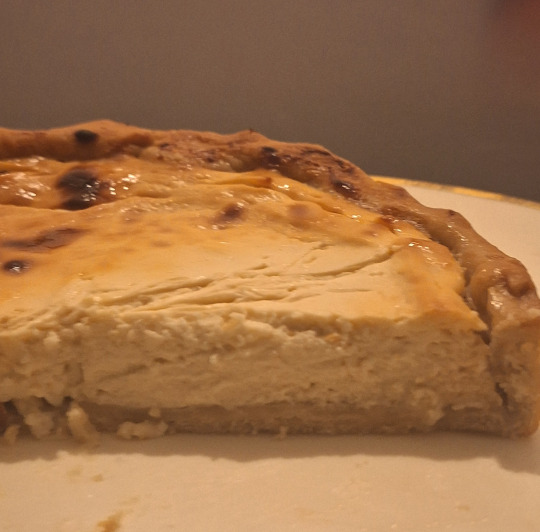
Karunbarono aka Roasted Meat
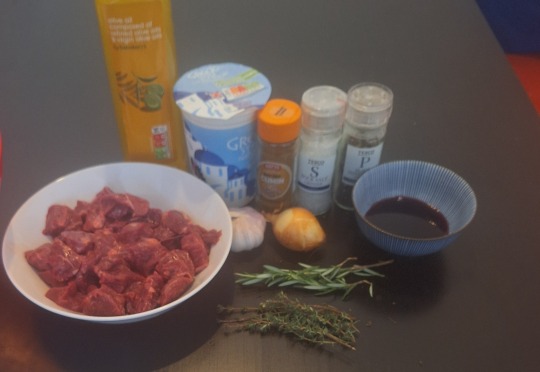
Cooking meat on skewers is a staple of Korithian cuisine, so much so that in certain regions the metal skewers or kartorosi, can be used as a form of currency. Meat is typically cooked over an open fire or on portable terracotta grills, though it is not unheard of to use a large beehive shaped oven or baros. The majority of the meat eaten by the lower classes comes in the form of small game such as rabbit or sausages made from the scraps of pork, beef, mutton, poultry, and even seafood left after the processing of more high-class cuts. The chicken has not yet been properly introduced to the islands, though some descendants of pre-Calamity chickens do exist, though they in most cases have drastically changed because of wild magic. Animals are rarely eaten young, lambs for example are almost never eaten as their potential for producing wool is too valuable. Most animals are allowed to age well past adulthood, except for in special circumstances. The practice of cooking meat in this style is prehistoric stretching back far before Korithia or Arkodai. What is newer however is the practice or marinading the meat before cooking it, this is a Korithian and later Kishite innovation.
Recipe
1 lb Mutton (meat used in this recipe), beef, lamb, venison, or horned-rabbit meat (in order to achieve this it is suggested to use wild hare meat in combination with pork fatback) chopped into bite sized pieces
4 Tablespoons Plain Greek Yogurt
4 Tablespoons Dry Red wine (Any dry red will work, for this recipe I used a Montepulciano d'abruzzo but an Agiorgitiko would work perfectly for this)
3 Tablespoons Olive Oil
4 Cloves of Garlic roughly chopped
1 Small onion roughly chopped
1 sprig fresh thyme
1 sprig fresh rosemary
1 tsp sea salt
1 tsp black pepper
1/2 tsp ground cumin
Gather and measure ingredients
Combine everything into a large bowl and stir, making sure that all pieces of meat are covered in the marinade.
Cover and allow meat to sit, preferably in the fridge for 2 hours or up to overnight.
Well the meat is marinating, if using wooden or bamboo skewers, soak in water for at least one hour to prevent burning.
Preheat the oven to 400 F or roughly 205 C. Or if cooking an open fire, allow an even coal bed to form.
Remove meat from the fridge, clean off excess marinade including any chunks of garlic or onion
Place meat tightly onto the skewers making sure that each piece is secure and will not fall off.
Brush each skewer with olive oil and additional salt and pepper to taste, optionally add a drizzle of red wine vinegar.
Place on a grate either in the oven with a pan below it to catch drippings or else over the fire. Allow to cook for 10-20 minutes depending on how well you want your meat cooked (less if using an open fire) Check every five minutes, flipping the meat after each check.
Remove from the oven and serve immediately.
Pasrosi Diki aka Little Fishes

Despite living by the sea, fish makes up a surprisingly small part of most Korithians' diet. The most valuable fish typically live far away from shore, where storms and sea monsters are a serious threat to ships. Much of the fish that is eaten are from smaller shallow water species, freshwater species, or shellfish. Tuna, swordfish, sturgeon, and ray are considered delicacies, typically reserved for the wealthy. Marine mammals such as porpoise are eaten on rare occasions, typically for ceremonial events. Pike, catfish, eel, sprats, sardines, mullet, squid, octopus, oysters, clams, and crabs are all consumed by the poorer classes. Sprats and sardines are by far the most well represented fish in the Korithian diet, typically fried or salted, or even ground and used in sauces. This particular recipe makes use of sprats. Unlike their neighbors in Baalkes and Ikopesh, Korithians rarely eat their fish raw with the exception of oysters.
Recipe
(Note that unlike modern recipes using whitebait, these are not breaded or battered as this particular cooking art has not yet been adopted in Korithia, though it is in its infancy in parts of Kishetal)
10-15 Sprats (other small fish or "whitebait" can also be used)
2 quarts of olive oil (not extra virgin)
Sea salt to taste
Black Pepper to Taste
Red Wine Vinegar to taste
Gather ingredients
Inspect fish, look for fish with clear eyes and with an inoffensive smell, avoid overly smelly or damaged fish.
Pour olive oil into a cast iron skillet or other high sided cooking vessel and heat to approximately 350 F or 177 C.
Fry the fish in batches of 5, stirring regularly to keep them from sticking. Cook for 2-4 minutes until the fish have started to crisp. Be careful, some fish may pop and spit.
Remove fish from the oil and allow them to drain.
Season fish with salt, pepper, and vinegar and serve.
Psampisa aka Flatbread
There are many varieties of bread eaten in Korithia and grain products make up anywhere from 50 to 80 percent of an average individuals diet. This particular variety of bread is most popular in the southern and eastern portions of Korithia, whereas a fluffier yeasted loaves are more commonly eaten in the west and north. This recipe is specifically made with wheat but similar breads can also be made with barley or with mixtures. If you do not want to make this bread yourself it can be substituted with most pita breads. Bread is served with every meal and some meals may feature multiple varieties of bread.
(Note for this recipe I only had self-raising flour at hand which gives a slightly puffier bread, if this is what you want add roughly 3 tsps baking powder)
Recipe
2 1/2 cups white wheat flour plus more for surface
1 1/2 teaspoons sea salt
1 cup whole fat greek yogurt
Olive oil for cooking
In a large bowl, mix together the flour, salt and baking powder. Add the yogurt and combine using a wooden spoon or hands until well incorporated
Transfer the dough to a lightly floured surface and knead by hand for 5 minutes until the dough feels smooth.
Cover the dough and allow to sit for approximately 20 minutes
Separate dough into desired number of flatbreads.
Add flour to each dough ball with your hands and then use a rolling pin to flatten out the dough on a lightly floured surface. Size is up to taste.
Heat a pan on medium high heat. Add the olive oil and cook the flatbreads one at a time for about 2-4 minutes, depending on thickness, per side until the bread is puffed and parts of it has become golden brown.
Akuraros aka Cucumber (Salad)

While the cucumber has become a relatively popular crop within Korithian agriculture it is not native and was all but unknown to their Arkodian predecessors. Cucumbers, which actually originated in Sinria and Ukar, were introduced by Kishite invaders during the Arko-Kishite war and were subsequently adopted by the survivors of that conflict. Cucumbers are associated with health and in particular with fertility. Cucumbers are typically eaten raw or pickled. They may be used in salads or even in drinks, ground into medicinal juices. Cucumbers are additionally believed to ward off disease carrying spirits and may be hung outside of the doors of sick individuals to ward off evil entities. Cucumbers are also fed to learning sages, as they are believed to strengthen the resolve and spirit. A potion consisting of the magical herbs wumopalo and lisapalo, wine, and cucumber juice has historically been used to temporarily induce in non-sages the ability to see spirits. Dill is additionally believed to produce positive effects, thought to ward of diseases of the stomach and cancers. Dill is often used in potions which may effect the physical nature of an individual, these potions are rarely used as their effects are most often permanent to some extent.
This particular cucumber salad recipe is a favorite in the region around Kalmanati, Bokith.
Recipe
1 large cucumber cleaned
2 cloves garlic roughly chopped
2 tablespoons fresh dill chopped
1/3 cup red wine vinegar
1/4 cup extra virgin olive oil
Salt to taste
Pepper to taste
Cumin to taste
Cut cucumber into thin slices (the actual width will vary dependent on taste)
Combine cucumber and all other ingredients in a non-reactive container and mix.
Cover and store the salad for at least 30 minutes and up to 12 hours.
Serve cold
Ewisasi aka Olives

The Ewasi or olive is in many ways the center of Korithian cuisine, as it is also in Baalkes and Knosh. Olive oil is used regularly and the olive fruit is consumed at all meals of the day including dessert. Olives are cured via the use of water, vinegar, brines, or dry salt in order to remove their innate bitterness. There are hundreds of varieties of olive in Korithia alone, their taste dependent on when they are harvested, how they are cured, the particular cultivar, and even the soil in which they are grown. Kalmanati is best known for two varities of olive, the kalmi, which is red fleshed and meaty, typically cured in red wine vinegar, and the prasiki, a small green olive which is firm and slightly nutty in flavor.
Recipe
Take your favorite olives, put them in a bowl. Optionally add vinegar and herbs
Funemikiwados aka Hill Sauce
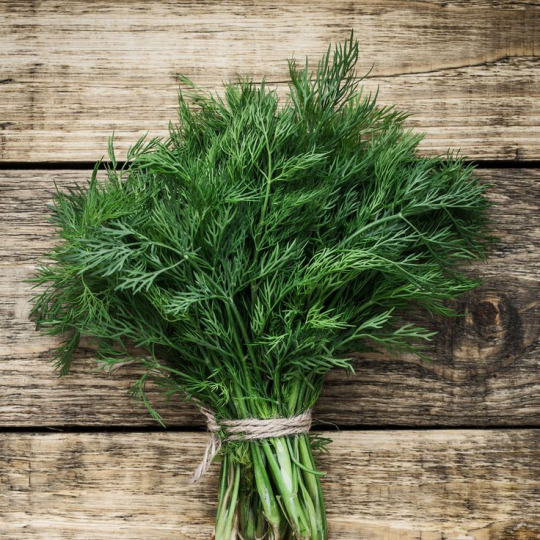
Hill sauce is the condiment of choice for most Korithian households and the exact nature of the sauce will vary greatly from region to region. In the north it is most often composed of pine nuts, olive oil, onion, vinegar, salt, and garlic. In the south the sauce is typically far more marine in nature, composed of seaweed, fish, garlic, olive oil, and vinegar. In all cases the ingredients are combined and mashed or ground to produce a pourable/dipable sauce. The sauce itself originates from the center of Korithia around the city of Bokakolis. The sauce was originally used by shepherds to flavor dried meats which may otherwise be dry or flavorless. Its name derives from the ingredients used within these early versions of the sauce, many of which were herbs plucked from the hillside while the shepherds tended to their flocks. The Kalmanatian version of the sauce is similar to this original herb based variety however it adds salt-cured fish and tisparos (Tisi - tickle, paros- seed) , another Kishite import (there it is called lisiki). This sauce is often used with practically any savory food, poured on meat, fish, vegetables, and bread. Often a house may be judged by the quality of their funemikiwados. Among the Kalmanatians there is two varieties of the sauce, a fresh version (the one described here) and another which is typically made with dried herbs and has additional vinegar added to act as a sort of preservative.
Recipe
1/2 cup extra virgin olive oil
1/3 cup red wine vinegar
2 tbsps rilogabo juice (1:1 orange and lemon)
2 anchovies (or other small salt-cured fish)
1/4 cup fresh chopped dill
1/6 cup fresh chopped parsley
1/8 cup fresh chopped thyme
6-10 leaves of fresh chopped rosemary
2-3 leaves fresh basil
2 cloves of garlic
Black pepper to taste
Ground tisparos to taste (Substitue ground sichuan pepper)
Gather the ingredients.
Combine and grind anchovies, garlic, and herbs into a fine paste, using a mortar and pestle or with a food processor.
Combine the herb paste ialong with the rest of the other ingredients and mix until completely incorporated.
Allow to sit at least 30 minutes, allowing for flavors to develop and properly incorporate with each other.
Serve with meat or fish
Wumos aka Wine
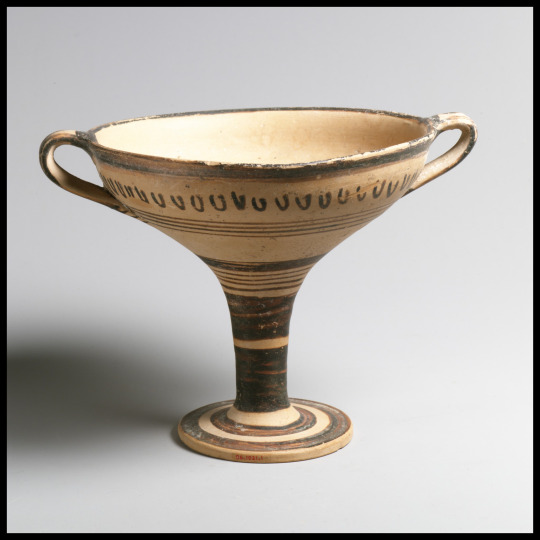
Wine in Korithia predates both the Korithians and the Arkodians, and had already been developed by several cultures on the islands including the Awaxi mentioned earlier. Wine is one of the most commonly consumed beverages, only surpassed by water, and slightly more common than psamarla, a Korithian version of unfiltered beer. Wine has many social, religious, and economic uses and is essential in the trade of the plantbrew, making up the base of many kinds of potion. There are many varieties of wine, with some being viewed as better or worse than others. Red wine is typically preferred for later in the day as it is believed that it helps to induce sleep while white wine is preferred for the morning and afternoon. Wine is typically watered down at a ratio of 2 parts water to 1 part wine, this may be either with plain or salted water. Unwatered wine is saved for special occasions and certain religious ceremonies in which intoxication is the goal. Wine may be sweetened with honey, figs, or various fruit juices. Herbs and spices such as black pepper, tisparos, coriander, saffron, thyme, and even cannabis and opium and various magical herbs may be added to change the flavor of the wine and to promote other effects.
Recipe
Pick a wine that you like and put it in a glass or cup. You can water it down if you would like but I didn't because I am not Korithian and this was a special occasion.
I finally got this post done! If you decided to read through this whole thing, thank you! Let me know if you try any of these, most of these amounts are ultimately a matter of taste, you can change things and experiment if you want.
Now we'll see if I get to 300 followers and we'll do this all over again with the food from another part of the Green Sea.
Thank you all again for following me, I've really enjoyed sharing my WIP with y'all!
@patternwelded-quill , @skyderman , @flaneurarbiter , @jclibanwrites , @alnaperera, @rhokisb, @blackblooms , @lord-nichron , @kosmic-kore , @friendlyshaped , @axl-ul , @talesfromtheunknowable , @wylanzahn , @dyrewrites , @foragedbonesblog , @kaylinalexanderbooks , @mk-writes-stuff , @roach-pizza
#fantasy food#writeblr#writing#worldbuilding#fantasy#testamentsofthegreensea#fantasy writing#world building#creative writing#story writing#200 followers#thank you guys so much!#fantasy world
76 notes
·
View notes
Text
300 Followers!!! 🥳🥳🥳 Recipe Poll!

Thank y'all so much! Its really encouraging to know that people are interested in the world and the characters that I've made!
When I reached 100 followers, to celebrate I recreated my MCs favorite food, kipsha and then for 200 followers I made Otilia's favorite food, daropaka.
Now that I have reached 300 followers I am making this poll with a list of the favorite foods of a few of my OCs so that I can show y'all a little more about the foods and customs of the Green Sea! Let me know which y'all would be most interested in seeing, and I will make it and post about it with a recipe and a bit of a history on that particular dish!
These are the favorite foods of Ninma, Wadikir, Istek, Dati, Shela, Akard, Zenit, and Penetinos (in that order).
Thank you again everyone, and here is to hoping that one day I'll get the chance to show you all of these recipes. In future polls I'll start adding some of the dishes from characters in the other books. And if this is the first time you've seen something from me on tumblr, vote too if you want and take a look at some of the other stuff on my blog!
@illarian-rambling, @mk-writes-stuff, @kaylinalexanderbooks, @willtheweaver, @patternwelded-quill
@elsie-writes, @elizaellwrites, @the-ellia-west, @the-octic-scribe, @the-golden-comet
@finickyfelix, @theprissythumbelina, @autism-purgatory, @diabolical-blue , @tildeathiwillwrite
@katenewmanwrites, @leahnardo-da-veggie, @paeliae-occasionally, @melpomene-grey @paeliae-occasionally
@drchenquill, @marlowethelibrarian, @winterandwords, @phoenixradiant, @pluttskutt
@dyrewrites, @unrepentantcheeseaddict, @roach-pizza, @rivenantiqnerd, @pluppsauthor
@flaneurarbiter, @dezerex, @axl-ul, @surroundedbypearls
@treesandwords, @the-golden-comet
P.S. I might start using a taglist for some of my posts, if you are tagged here and don't want to be tagged for future posts or if you're not on there and want to be added to the taglist, let me know!
#testamentsofthegreensea#writeblr#fantasy writing#writing#300 followers#thank you!#creative writing#story writing#fantasy#writer community#fiction writing#writers community#writer#follower milestone#poll#fantasy food
41 notes
·
View notes
Text
OC Intro: Bop


Hello everyone! The winner of the latest character intro poll was Bop! As Bop is not a mortal their intro is going to be slightly different then most of the other introductions that I have done. The new poll should be up in the next few days!
This is also funnily enough an introduction to Narul's weapon.
(Please excuse any typos, its late and I'm sure I'll find them sooner or later)
Name: Pufut (Translated as "Bop")

Bop has long forgotten their actual name, if they had one at all as many spirits do not, in the past they were referred to as The Ripper of Cedars among other names.
Bop is a name given to the spirit by Narul, as Bop themselves were unsure of what their name actually was. Bop is a reference to the fact that Bop is contained within a hammer (Narul, unfortunately, does not have much experience naming things). To be more accurate, the name given to them by Narul is Pufut, an onomatopoetic Kishite word that refers to the sound of something being gently hit. Translated into English, the closest equivalent is Bop or perhaps Bonk.
Continues Below the Cut!
Family
Unknown
Before his capture Bop was in the company of several other powerful weather spirits, however it is not entirely clear whether they were related.
Homeland/Place of Origin
The Red Cedar Mountains
It seems likely that Bop, as a Great Spirit, formed in the region where they once held dominion. Their age is unclear, well he is certainly at least 2,000 years old, their age could be far far older, likely forming sometime after the Calamity in order to replace the spirits lost at that time, if that is the case then Bop may be over 40,000 years old (This would make him the 4th oldest entity to appear in person in the first book.) Many spirits have, comparatively fleeting memories, forgetting much of their past as the centuries roll past. Additionally being trapped in a hammer for centuries has caused Bop to forget much of their past. Alternatively they may have been brought to Kobani from one of the Spirit Worlds, likely via the will of the Storm God, Kotomah.
Great Spirits
Great Spirits or Mountain Gods are those spirits considered to be exceptionally powerful by humans. In some cases, they may be worshiped as minor deities or protectors of a certain region or geographical feature, often a mountain. Many cities have a Great Spirit which acts as its protector (though it should be noted these protections are against supernatural and climatic events, not political ones, a Mountain God does not care if a regime changes so long as they continue to receive offerings and respect). It is possible that the reason Labisa does not have its own Great Spirit despite being such a large city is that Bop would have filled that role had they not been trapped in the hammer.
Many Great Spirits may loosely serve or act in the name of a Heavenly God, often the patron god of a Kishite or Korithian city for example, based on the deity which the local Mountain God serves. Bop was connected with the storm god Kotomah. After capturing Bop, the Spiritblood Tamel, declared the Goddess Humbalibal, as the city's patron.
In many places across the Green Sea and beyond prayer is directed not at the Heavenly Gods directly, as it is believed that they are too distant and powerful to hear much less care, but rather to spirits which may act as conduits to the Heavenly Gods. In Kishetal it is typical to start a prayer first with a call to the spirits or through a ritual to attract the spirits that are believed to be connected to a certain deity.
Interestingly, the Deep Sun, as a demon, technically falls into the same categorization as Bop.

History: Two Excerpts From Kishite Literature
"When the first stones of the city of
Kings had not been lain
When the Golden Trout by wily Seha’s Hand
Was fresh within the net
When the first reed for floor was plucked
When the first branch for roof had been cut
When still wild folk roamed and ruled the cedar hills
When blood soaked still the walls of Kur
Tamel sent council and gift to the Children of
Arkodai for to bless his new kingdom
Gifts of copper, pelt, and sweet honey
Of cool wine and fiery gem
This gifts he sent in the hands of black-haired Uridush
Whose beauty mortal and spirit envy
The Arkodians took upon themselves the Gifts of Tamel
But when time came to bestow upon Uridush a Kingly
Gift, a gift of their blessed metals as they had gifted to
The Desert King and The Heirs of Neduz
They gave to him no spear, nor ax or sword or scepter
But only hammer and rope, crude and barbaric
Made by no master
No spirit dwelt within them
“Disgrace upon noble Tamel you Lay!” Cried brave Uridush
“He is a king unmatched, his beauty and grace without end
And yet upon him you give these meager gifts, which even
The most paltry of your noble men would hang their head
To carry! The Metal is unpolished, its surface crude!
There is no beauty! No mastery!”
When Uridush spoke forth in his master’s name
The Children of Arkodai fell upon him with pincers of bronze
And took his noble tongue from between his teeth
With mouth bloodied and silenced
Uridush returned to just Tamel’s side and presented
These cruel and dishonorable gifts
Tamel cried out for his beloved servant and grieved his sweet words
With righteous justice a fire in his belly Tamel and his Three Sons
Hiru the Broad, Hutbari the Hoopoe Born, and Haman the Thrice Bled
Took to the Isle of Olives and in silent night fell upon the Arkodians
Their warriors they cut down and laid upon the cold stones
7 Sages they bound in ropes of hemp and bore away
“You have ripped us from our warm beds where do you take us?”
They cried as one in the tongue of the forge masters
But from the Masters of the Golden Plain and the Endless Lake
They received no answers nor were words spoken
No spirit dared come to their call, for they feared the
Wrath of Tamel, whose eyes saw all deception
Across the Mumbling Sea to the Realm of the Cedar
With Hammer and Rope Tall Tamel and his sons
Brought their loot, through forest and up stony slopes
They conquered the Ice Wrapped Mount
Where the Lords of the Eastern Shores and the Towering Peaks
Dwelt in their Palace of Cloud and Shadow
Where Storm Unending Lashed Furiously Upon
Stone and Ice and Flesh
And hence with his rope of Western Metal
Great and Mighty Tamel the Golden Eyed
He of The Dragon Bane, He of the Fire of
Kur, He whose rivals live not amongst men
with his Three Sons, with the blessing of Humbalibal
Resting upon their heads
They cast forth into the Black Storm
Domain of the Great Spirits
Servants of the God of Winds
Five there were
She who splits the Oak,
He who swallows the Sun
She who pulls down the River of the Heavens
He Whose Voice Shakes Mountains
And The Ripper of Cedars
Children of The Howling One all
“Take this, the gift of ignoble men! Catch it so
That from you I may make a kingdom
That will stand tall before the lands
Of my lesser kin!”
And upon the Ripper of Cedars his rope caught
The fury of the storm shook the Columns of Kobani
The Winds that Flatten Forest Roared
The Ice that Cuts Flesh Descended Upon Them
“Father!” His Sons Cried
“Father! Through Wool and Linen this Sharp
Wind Cuts!”
Youngest of Sons, Haman fell there
His Skin Pierced, His Hands Slickened by Blood
From the Mountain he was carried by cruel winds
And in the Green Valley He Fell
His flesh torn by stone and branch
His lifeblood stolen by bird and beast
But Grief could not take Tamel
And with the might of the Mountain Goddess
He tore down the Great Spirit from its perch
Down to dead stone he cast it
The mountain shook and cracked
And there under his order the Sages of Arkodai bound
The Ripper of the Cedars into the hammer which
The Arkodians had gifted to noble Uridush
So great was the fury of the spirit that all save for one of
The Seven Sages was consumed by lightless death
Before he too fell, Silver-eyed Banusos
The Seventh Sage with eyes broken and ears torn
Fell upon his knees and presented to Tamel
The hammer, The hammer that shakes mountains
Greatest of Noble Arms
With gut of dragon and kiriki The King of the Kishites
Bound its head and with the rope which had bound the spirit
he wrapped its olive haft so that it may not slip in his mighty grasp
And He named it, Gate Breaker
For Before it, No Man nor City Could Stand ”
-From The Great History (Ti Jal Tiamut)
“Oh Noble Tamel
Oh Beautiful Tamel
Oh Glorious Tamel
Your Life Taken by Arkodian Treachery
By the cold Ocean Swallowed
Your Blood Swore upon Shebali’s Sand
An Oath Terrible and Dark
Bound By Spirit and Gods
That Arkodian Blood Should be Shed
Till Every Vein Was Run Dry
Till No Kings Sit Upon Stone Thrones
Till Arkodai Kingdom Be No More
Than a Memory Faint
Till the Last Sages of Ancient Furnaces
Draw breath no longer
7 Children Sailed 100,000 Men Beside to Arkodai Bound
Ladaru Vengeful and Great, Fell first, Pierced by Arrow Keen
By His own Blood Shot and Felled
Baza, Jealous Brother-Killer, Brought low by Vengeful Justice
Then Atab, Silent and Strong, Crushed by Serpent Vast
Sema, the Magnificent, Whose Chariot Flattened Cities
By wicked poison was Slain
Then Farutima and Mushadi, Wise and Merciful
By Ikopi Pirate and Arkodian Treachery were Cut
Twas Hiruha Cunning, the last of your Children to bear a crown
Who From Waters Cold and Cruel Bore You Up
No Rot Victorious Nor Decay Enthroned Upon You
From Your Hand She Took Gate Breaker
Your Hammer Great and Powerful
Thirty Men they say, Thirty Men to Break your Grasp
With Hammer in Hand at Myminat’s Plain She Broke Mikrab
Who Knew You Once, Whose Madness Raged
He Fled and the Walls Shattered Before Him
Into the Terrible City She Rode
There Sages Wicked In Their Own Furnaces Burned
And With them All Knowledge of Western Metal
Was Rendered to Ash and Bone Crumbled
But When Victorious Upon Her Ship
She Sailed Home Towards Great Labisa
To Her Father’s Throne
But Like Her Father Before
Swallowed by Sea was She
Lost to Darkness Blinding Darkness
Last Child of Tamel
Beloved Daughter Taken to Lives Unlived
Your Mighty Weapon Gone, by the abyss consumed
Your Name Sake Tamel the Victorious
Tamel the King Who Spared the Shepherd
And Crushed the Last Kings of Arkodai
Searched Dark Waters For Beloved Hiruha
But Found Naught but Whispering Waves
We Mourn Her We Cry Out To Gods We Pray
Hammer of Kings May You Return to Us
And May the Bones of Glorious Hiruha
Rest Beside Her Family Eternally.”
-The Lament of Tamel and Hiruha
Appearance
As Bop is trapped within the hammer of Tamel, they are not immediately visible. The hammer itself is crudely made, its head is made from unpolished Arkodian Bronze, which is itself a dark brown colour, somewhat similar to oxidized iron. The head is additionally wrapped in a couple small lengths of ancient leathers (supposedly from a dragon and a kiriki), the haft (which has been replaced numerous times) is made from olive wood and is wrapped in a rope once made from a mixture of Arkodian Bronze fibre and plant material. The plant material has since rotted away leaving nothing only the metallic elements behind. To the untrained eye it is an unimpressive and largely undesirable tool, too large and heavy for a normal person to wield and certainly not aesthetically pleasing.
The only way to see Bop is to let them into your mind while holding the hammer. Not everyone can see Bop clearly, for example when Ninma holds the hammer, the spirit appears in her mind is little more than a silver cloud. However when Narul holds the hammer, and when Bop feels the need to manifest a form (rather than merely existing as a voice in Narul's head), Narul sees a constantly shifting figure seemingly made of solidified mist or cloud. Their traits are never static and over the course of just a few seconds they may change entirely. As a result Narul has difficulty describing the spirit to others.
Personality
Bop is a curious, wise and kindly being. As a result of being trapped in darkness for so long they cherish the chance to get to speak with Narul and to see through his eyes. They don't remember much about their old existence, however they don't seem particularly concerned about it either. Bop is vague, though not intentionally and tends to be far more interested in the needs and wants of others, primarily Narul, rather than their own. Bop is a very powerful spirit and can make this fact known when they want to.
Gender/Pronouns
Agender
Bop as a spirit does not experience normal human expressions of genders, what is more their constantly shifting nature means that they have very few static traits. As such Narul views Bop as having both Masculine and Feminine traits which themselves change regularly. The same could be said about Bop's age as the spirit may at once express traits which are constituent with older humans and those consistent with children. They are not limited to human traits either and may at times exhibit animalistic elements.
Sexual Orientation
Asexual and Aromantic
The majority of spirits, though not all, do not feel sexual attraction of any sort nor are most capable or interested in the concept of romantic love. However Bop is capable of very profound platonic love, as this is their relationship with Narul
Relationships
Bop doesn't remember much about their past friends/acquaintances including his past wielders. This includes Tamel, despite the fact that Tamel wielded their hammer for nearly 500 years, Bop has next to no memory about the Great King. Similarly they have no memory of Hiruha, though this may be because Hiruha seemingly was unable to properly communicate with spirit.
Bop is very close with Narul, protecting him from nightmares as well as the machinations of the Deep Sun. As Narul is almost always holding the hammer, the two are almost constant companions.
The relationship between Narul and Bop is very deep, bordering on being queerplatonic.
Largely through Narul, Bop has also come to care deeply for the other members of the group, most notably with Ninma and Otilia. Bop speaks to both regularly. This is done by Narul giving them the hammer to hold.
Favourite Colour
Blue
Favourite Food
Bop does not eat and likely cannot taste (though some spirits can smell), however they do experience some of the happy sensations that Narul feels when eating or smelling a food that he likes. As a result Bop is most fond of the foods that Narul likes.
Biggest Fear
That their hammer may get lost in darkness again with them in it.
Sage
No
Bop is capable of true magic beyond sagecraft. However their use of magic is severely limited by their current condition, as such most of the magic they are able to work is seen by how they affect Narul (healing, increasing his strength, etc.)
Literate
No
@illarian-rambling, @mk-writes-stuff, @kaylinalexanderbooks, @willtheweaver, @patternwelded-quill
@elsie-writes, @elizaellwrites, @the-ellia-west, @the-octic-scribe, @the-golden-comet
@finickyfelix, @theprissythumbelina, @autism-purgatory, @diabolical-blue , @tildeathiwillwrite
@katenewmanwrites, @leahnardo-da-veggie, @paeliae-occasionally, @melpomene-grey @paeliae-occasionally
@drchenquill, @marlowethelibrarian, @winterandwords, @phoenixradiant, @pluttskutt
@dyrewrites, @unrepentantcheeseaddict, @roach-pizza, @rivenantiqnerd, @pluppsauthor
@flaneurarbiter, @dezerex, @axl-ul, @surroundedbypearls
@treesandwords, @the-golden-comet
#testamentsofthegreensea#writeblr#writing#fantasy writing#worldbuilding#narul#queer fantasy#OC intro#story writing
49 notes
·
View notes
Text
The Regions of Kishetal
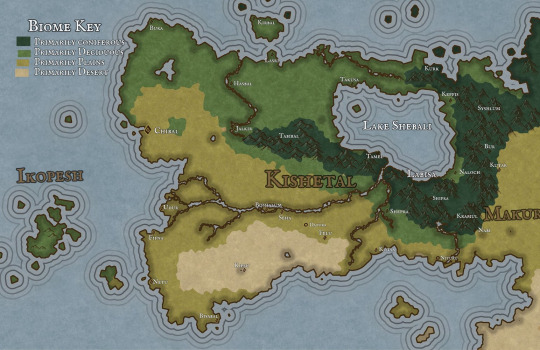
Pictured Above: An environmental map of the land of Kishetal

Pictured Above: A map of the 7 Kishic Regions
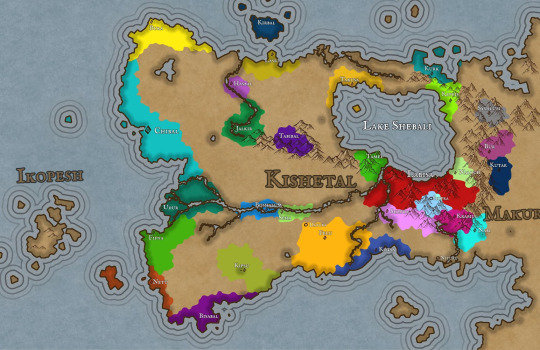
Pictured Above: A map of the Kishic City-States and their territories
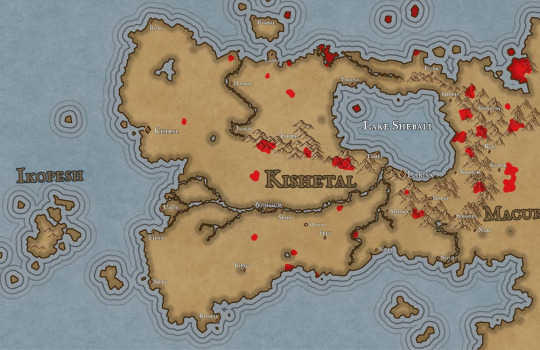
Pictured Above: A map of Significant Stable Forestfolk Populations
Here is a quick overview of the regions of Kishetal, the homeland of Narul and Ninma. And some good ol' maps. I'll be posting in the future about some of the creatures and forestfolk mentioned below!
As always send questions please!
Continues below the cut!
The Regions of Kishetal
1. The Red Cedar Mountains
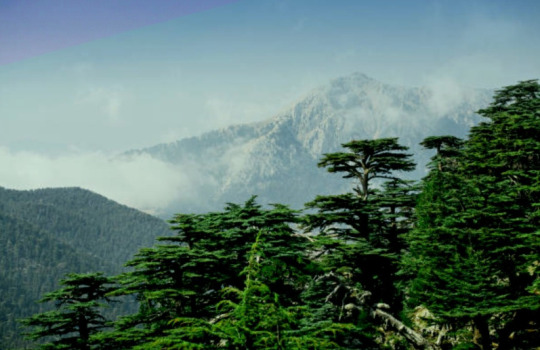
Pictured Above: The Red Cedar Mountains near Kepfis
The Red Cedar Mountains stretch from the Shabalic Sea in the north nearly to the Sea of Agitu in the south. The Red Cedar Mountains were formed in ancient times having already been present in the Age of Metal and Glass. However, the Red Cedar Mountains are not among the eleven “Chains of Sanctuary,” those mountain ranges around the planet in which humanity sheltered from the wrath of the gods during the Calamity. The predominant underlying stone of the RCM is limestone, with occasional but significant areas and deposits of serpentinite, basalt, and dolerite. The region experiences warm summers and cold winters, often with considerable snow and rainfall, particularly at higher elevations. The Mountains surround Lake Shebali, which acts as an inland sea and a source of food and transport for much of eastern Kishetal. At lower elevations, such as Labisa, the predominant vegetation is juniper and oak. Forests of black pine, cedar, and fir are dominant and common at higher elevations. The highest peaks are home to alpine meadows. Wild grapes, figs, and olives are all abundant in this region alongside their domesticated cousins.
Some fauna include wolves, jackals, wild goats, giant minks, wild bulls(aurochs), leopards, kishic lions, kishic tigers, caracals, roe deer, gazelle, wild boar, eagles, storks, horned rabbits, kishic brown bears, lynxes, and kishic ibex.
Very rarely found is the Kishic Elephant, actually a species of mammoth, these tiny pachyderms are about the same size as the average dairy cow. Only about 100 still survive in sheltered valleys to the north.
Examples of monstrous and magical Fauna including Flesh-eating deer, kiriki, dorasi, and the kutiri. While there are rumors of larger monsters such as dragons, these are mostly little more than legends and folklore. Though there is no telling what creatures could be hiding in the many caves and tunnels which dot the mountains.
There are numerous small forestfolk tribes which live in isolated areas.
(I will post more about that later)
2. The Felic Plain

Pictured Above: The Felic Plain north of Boshalum
The Felic Plains primarily consist of grassland with occasional patches of deciduous forest. The area is famed for its almond trees and its many wildflowers, including wild roses and hasir flowers. During the fall, great patches of the plains turn red with the blooming of hasir flowers.
The region experiences hot summers and mild but wet winters, which makes the region ideal for farming. As such, the Felic Plains act as the bread-basket of Kishetal. The region is split by the Aratshin River, which extends from Lake Shebali to the Green Sea. The plains are disrupted by an especially dense forested area known as the Garden. All attempts to settle the Garden have failed.
Fauna include, wolves, jackals, gazelles, wild bulls, kishic lions, deer, eagles, storks, horned rabbits, kishic brown bears, foxes, wild goats, polecats( which are popular pets), felic falcons, and hyenas.
The plains are home to several monstrous/magical species, including Flesh-eating deer, garudu, takmek, and the Unturu Serpent.
There are a handul of forestfolk tribes as well as a single hillfolk tribe in this region.
3. The Western Coast
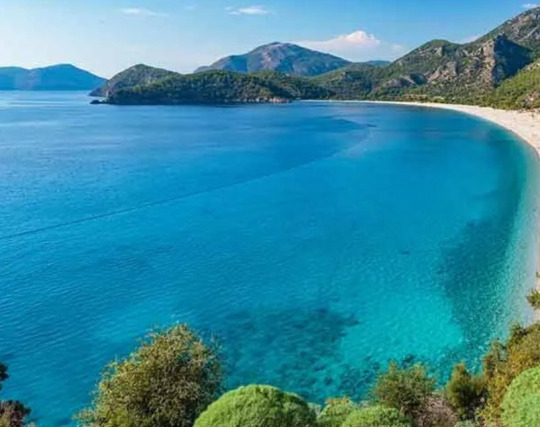
Pictured Above: The Western Coast near the city-state of Chibal
The Western Coast borders the Green Sea stretching from Bura in the north to Bisabal in the south. The ecoregion has a warm semi-tropical climate akin to a Mediterranean climate. Winter is the wettest season, and summer is the driest.
The Western coast consists primarily of three biomes. The deciduous forests in the north consist primarily of hornbeams, oaks, maples, cedar, and black pine. The central marshlands surrounding Udur have heavy concentrations of reeds, papyrus, poplar, and willow. The southern plains are similar to the Felic plain region though typically arider. Bay, olive, carob, and sweetgum are all common in this region. The Green Sea and its coast are home to many kinds of edible seaweed which form an essential part of the Chibalic and Buric diets.
Fauna include wild boars, foxes, jackals, wolves, badgers, wildcats, coastal brown bears, gazelles, deer, wild bulls, wild goats, and storks. Marine life includes dolphins, seals, whales, sea turtles, and many species of fish.
Monstrous fauna include bulari, sea-dragons, serpents, krinari, and ramitalek.
Aside from Ikopeshi's there are no surviving forestfolk tribes in this region.
4. The Northern Coast/Sheprian Forest

Pictured Above: The Sheprian Forest near Shepra
The Sheprian forest in the northern part of Kishetal is primarily composed of deciduous trees with occasional conifer patches at areas with higher elevations. Common trees include oak, chestnut, birch, hornbeam, black pine, cedar, and beech.
The climate is temperate with warm dry summers and cold wet winters. The north is typically thought of as the wildest region, with most city-states and settlements, including Shepra, clinging to the Corin river. Sheprian poetry is a unique variety of poetry, similar to the Japanese haiku, which originates from the forest festivals of the northern coast.
Fauna include wolves, jackals, gazelles, wild bulls, kishic lions, deer, eagles, storks, horned rabbits, kishic brown bears, foxes, wild goats, giant minks, horned rabbits, wild sheep, eagles, and kishic leopards.
Monstrous fauna include flesh-eating deer, garudu, kiriki, dorasi, and winged tigers.
This region contains the second highest concentration of forestfolk after the Red Cedar Mountains.
5. The Southern coast

Placed Above: The Southern Coast near Bisabal
The Southern Coast consists of three regions; the southern deciduous forest, the scrubland, and the plains. The climate in the south is quite warm, with summers being hot and dry and winters mild in both temperature and rainfall. On rare occasions, the southern coast may experience heavy snowfall.
Major cities are sparse however, many villages dot the southern coast, many of these villages rely on piracy, preying primarily on Apunian and Jezaani ships traveling to and from the Western Coast.
Limestone plateaus and outcroppings are near the border of the southern coast, and the desert are said to be the remains of ancient buildings though this is not true.
Poplar, olive, bay, carob, almond, oaks, and umbrella pine are all common.
Fauna includes wolves, jackals, gazelles, wild bulls, kishic lions, deer, eagles, storks, horned rabbits, kishic brown bears, foxes, wild goats, polecats, felic falcons, kishic leopards, and hyenas.
The south is home to relatively few monstrous/magical species though it is home to the largest population of kiriki in Kishetal.
There are only two forestfolk populations in this region.
6. The Kipsian Desert
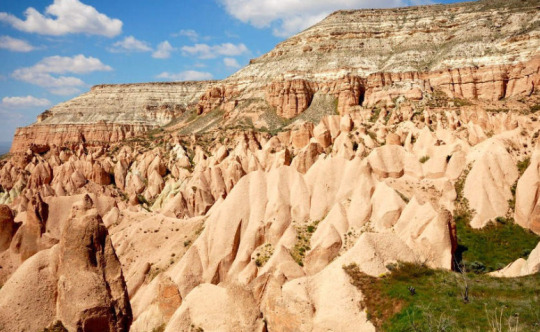
Pictured Above: The limestone formations of the Kipsian desert south east of Kipsu.
The Kipsian desert is the least populated region of Kishetal as the arid environment is not conducive to agriculture. Ruins of older civilizations suggest that the area may have once been more hospitable.
Plant life is sparse and largely limited to hardy shrubs and grasses. The region is famous for its carob and the candies and sweets produced from the carob by its inhabitants. Mesa, plateaus, pillars, and other stone structures are common; foreign visitors often visit the region seeking religious or spiritual enlightenment amongst the arches and columns. Many never leave.
Fauna include jackals, gazelles, kishic lions, deer, gazelle, wild asses, and hyenas. The Kipsian desert is also the only region in Kishetal in which the kishic ostrich and oryx survive.
Monstrous fauna include Flesh-eating deer, takmek, sikara, kiriki, and giant lions.
There are no forestfolk populations here.
7. The Makurian Steppe
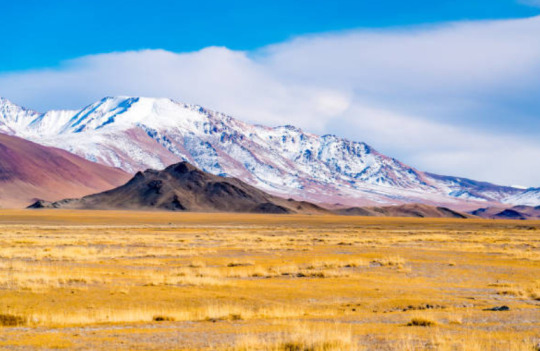
Pictured Above: The Makurian Steppe north of Shebal
The Makurian steppe is massive, spreading over most of western Masia. Only a tiny sliver of that vast extent falls in Kishetal. Trees are almost entirely absent. Vast expanses of grass-covered hills define the area. To the north of the steppe is the Shabalic forest, and to the south is the Jezaaic desert.
The heavy presence of sagebrush, sedges, and grasses and the relatively dry climate have led to a preference for a nomadic and pastoralist lifestyle. Makurian tribes regularly raid and intrude in the region, with their westward pushes typically being halted by the mountains.
Fauna include wild horses, wild asses, wild bulls, jackals, gazelle, deer, mountain sheep, macuri lions, and leopards.
Monstrous fauna include the tomob and the wulut.
There are only 3 native forestfolk populations in this region.
As always ask questions! Anything! And if y'all like this I might do this with some other regions.
@patternwelded-quill @flaneurarbiter @skyderman @blackblooms @roach-pizza @illarian-rambling @dezerex @theocticscribe @axl-ul, @persnickety-peahen @angie-j-kay
@surroundedbypearls I was looking through my intro post and I just realized I've been completely forgetting to put you in the taglist! Sorry about that!
#writeblr#writing#fantasy#worldbuilding#writer#fantasy writing#queer fantasy#fantasy world#testamentsofthegreensea#fantasy map#fantasy novel#fantasy worldbuilding#world building#narul#writblr
58 notes
·
View notes
Text
Well that was fast

I'm gonna need to put up a recipe poll to celebrate 300 soon! Thank y'all!
27 notes
·
View notes
Note
For the Q&A tag, I've always been intriqued by Narul (giant man). A few questions about him.
1. infodump as much as you want about what being a demigod/spiritblood means, and how he views it.
2. How did he meet Ninma
And 3. How is he as a father? Is he responsible? Protective? Stern? Etc.
Thanks for the ask!
1. Infodump as much as you want about what being a demigod/spiritblood means, and how he views it.
Oof, if I really went all out infodumping I could be here writing this for hours, so I'm going to keep things simple.
The term spiritblood is technically more accurate because, unlike with the demigods in say Greek mythology, spiritbloods are not the children of a mortal and a deity, but rather of a mortal and a particularly powerful spirit. Narul is a bit of a special case as his mother was spiritblooded, that is to say, while she herself was not a spiritblood, her grandmother was. This means that Narul is technically more magical than a normal spirit blood.
So what does being a spiritblood entail? There is much variation between spiritbloods often depending on the kind of spirit from which they descend among other factors. However there are several traits that are shared amongst all spiritbloods.
1) All spiritbloods are inhumanly large, not only in terms of height but also in terms of bulk and proportion. A spiritblood does not merely look like a tall human. Their magical nature allows them to reach sizes and weights that would otherwise kill a normal human. The shortest living spiritblood in the age of Narul is Mikrab at just under 8ft tall. Narul is the tallest at 9ft.
2) As previously mentioned, spiritbloods do not have normal human proportions. The War Queen Batricca for example, was famed for her unusually long arms. Narul is not only tall but massive, naturally bulky, he is so large that he struggles to fit in most small buildings. To the average person Narul looks somewhat monstrous, thus why he is called "Giant".
3) All spiritbloods are blessed with supernatural strength and durability. The first king of Kishetal, the spiritblood Tamel, was known as the Wallbreaker for his sheer and terrifying strength. It is impossible for a human to match the physical strength of a spiritblood. A single spiritblood in ancient times, was said to be capable of sieging a city, thus why so many cities in Narul's time still have such massive fortifications.
4) Spiritbloods have incredibly dense bones and thick skin, comparable to well treated leather armor. This affords spiritbloods a great deal of protection against a variety of threats and makes them even more difficult opponents in battle. The only materials which do not struggle to cut through their thick hides are volcanic glass and the magical metal called Arkodian Bronze.
5) All spiritbloods are capable of seeing and communicating with spirits, something that for normal humans, typically only sages can do. However spiritbloods as a rule, are incapable of using magic.
6) Spiritbloods are incredibly resistant both to toxins and to magical mutation. For this reason Narul can eat poisonous or magical plants without feeling any effects in quantities that would otherwise kill dozens of normal people. The downside of this is that while toxins do not work on Narul, neither do most medicines. Most spiritbloods have an incredibly difficult time getting drunk, Narul for example must drink the equivalent of several gallons of wine just to feel tipsy. This has led to a myth, popularized by those with poor knowledge of spiritbloods, that spiritbloods tend to be drunkards.
7) Spiritbloods are functionally immortal. This is to say that unless felled by a physical injury, a spiritblood will not die, at least not from the deterioration that comes from age. Theoretically a spiritblood could live indefinitely if they avoided conflict. However while the body may not age after a certain point, the mind does. As a spiritblood ages their mental facilities will begin to wane, they will forget their past self and will begin to suffer cognitive decline. It is not unusual for spiritbloods to seek death when this begins to occur, for fear of forgetting everything. The oldest living spiritblood is Mikrab who at almost 2000 years old has suffered considerable declines in his memory and mental capabilities, thus earning him the moniker "Mikrab the Mad".
So there's that, but what does Narul think about being a spiritblood? Long story short he hates it. Before he knew that he was a spiritblood he was taught that he was a forestfolk, a magical mutation, and was as a result intrinsically dangerous to others, a rabid dog ready to turn. Finding out that his childhood was a lie did little to comfort him as it did nothing to calm his anxieties around accidentally hurting someone due to his strength and size. Further the idea of living for centuries and slowly forgetting about the people that he cares about, terrifies him. Narul is not a power hungry or violent person and as such takes little enjoyment from his supernatural abilities. The only thing he really appreciates is being able to see spirits.
2. How did he meet Ninma
Narul was brought to the Palace of Labisa as a child and served there as a slave to King Hutbari (the same person that lied to Narul about his true nature and instilled all of the self-loathing and fear in him).
Hutbari had many children, the youngest of which was Ninma. Narul would have seen her around the Palace grounds, avoiding her tutors, climbing walls, chasing lizards, and otherwise being a menace. Narul was in the palace the day that she was born. However despite living together for the first 5 years of Ninma's life the two never talked until after the coup. Ninma wasn't even aware of the fact that Narul could talk until after they had both left Labisa.
And 3. How is he as a father? Is he responsible? Protective? Stern? Etc.
Narul is a kind and responsible father. He makes sure that she is well fed and cared for, he plays games with her, he listens to the stories that she makes. He tries his best to understand her concerns and interests (As he is an illiterate giant and she a former noble child, they have quite different perceptions of the world). If they were in the real world Narul would be at every one of Ninma's sport's games, theater productions, dad and daughter dances, girl scout meetings, and just about anything else.
He is however very protective of Ninma. He sees her as fragile (as everyone is compared to him) and as such fears her getting hurt, or worse losing her. This unfortunately clashes at times with Ninma's own adventurous personality and may lead to tension between the two of them. Narul tries to be stern at times, but isn't all that good at it, if only because Ninma knows that Narul is a giant softy.
Along with his fear of her getting hurt whether by him or by something else, Narul lives in constant fear of Ninma's growing up, he fears losing her to old age or something else. He fears that one day after centuries have passed that he might forget her.
Taglist:
@illarian-rambling, @mk-writes-stuff, @kaylinalexanderbooks, @willtheweaver, @patternwelded-quill
@elsie-writes, @elizaellwrites, @the-ellia-west, @the-octic-scribe, @the-golden-comet
@finickyfelix, @theprissythumbelina, @autism-purgatory, @diabolical-blue , @tildeathiwillwrite
@katenewmanwrites, @leahnardo-da-veggie, @paeliae-occasionally, @melpomene-grey
@drchenquill, @marlowethelibrarian, @phoenixradiant, @pluttskutt
@dyrewrites, @unrepentantcheeseaddict, @roach-pizza, @rivenantiqnerd
@flaneurarbiter, @dezerex, @axl-ul, @surroundedbypearls
@treesandwords
#testamentsofthegreensea#writeblr#writing#fantasy writing#fantasy#narul#OC#q and a#ask answered#ask game#Big bi dad#worldbuilding#world building
26 notes
·
View notes
Text
Writing Share/Last "Line" Tag
Thanks for the tag @sableglass!
(Akarat is the Apunian equivalent of the name Akard)
Akarat stood and nodded. He pulled a golden ring from his finger, inscribed with his title, and dropped it before the beggar. “ Take it Buru, It is hard to rebuild a life if you have nothing to start with.”
Bazus opened his mouth to object, but was silenced once more by the Apunian’s raised hand, “He’ll need clothes too.”
Akarat turned expectantly to the others, who returned his gaze with stupefied faces.
“Well? Something to cover his manhood, come on. I only have this between the air and my skin, so I cannot give over my clothes.”
Bazus’s face reddened, tinted by embarrassment and anger. “You can’t be serious. Who do you think you are, coming to our city and trying to give away the clothes of a prince to... to... that? How dare...”
“Here!”
The small voice called out from behind the guards. They moved aside to reveal Ninma, her shawl raised above her head.
“Ninma, what are you doing here?” Bazus snapped.
Ninma ignored her elder sibling, stopping only to show him her tongue. She stood before Akarat and offered him the small length of silk and golden thread. The Apunian raised a brow and took the shawl from her tiny hands.
“Very generous of you, princess.”
Ninma shrugged and glanced at the beggar who still sat crouched in the dirt, his eyes wide, his jaw slack with shock. “I don’t need it, I have my tunic. Besides, my paba will get me a better one for my birthday. He can have it.”
Akarat’s lips curled in the hint of a smile. “I see.”
As he offered the cloth to Buru, the man took it with trembling hands. Never in his life had he touched silk. He tied the cloth over his groin to hide his nudity.
“How... how do I thank you?”
“Better yourself, make use of my ring, pray in the temples, start a new shop. Perhaps one day, one of your works will grace my table. Now, I do not believe you are welcome on this hill. You should return to the lower city.”
Buru bowed his head, first to Bazus and Ninma, and then to Akarat, once, twice, three times. He then took off, stumbling down the hill, gripping the ring with such intensity that it turned his knuckles white.
Bazus huffed. “Let’s continue, shall we? I want to get to the Hall of Gods, preferably before you pawn off all of mine and my siblings' possessions to the grovelling masses. And you, Ninma, back to the palace. You have lessons to attend.”
Ninma tilted her chin disdainfully. “No.”
She confidently moved past her brother. Now informed as to where they were headed, she had no need to follow behind them.
Akarat stifled a chuckle.
This is a big one so I'm tagging a bunch of y'all:
@illarian-rambling, @mk-writes-stuff, @kaylinalexanderbooks, @willtheweaver, @patternwelded-quill
@elsie-writes, @elizaellwrites, @the-ellia-west, @the-golden-comet
@finickyfelix, @theprissythumbelina, @diabolical-blue , @tildeathiwillwrite
@katenewmanwrites, @leahnardo-da-veggie, @paeliae-occasionally, @melpomene-grey
@drchenquill, @marlowethelibrarian , @phoenixradiant, @pluttskutt
@dyrewrites, @unrepentantcheeseaddict, @roach-pizza, @rivenantiqnerd, @pluppsauthor
23 notes
·
View notes
Text
Writing Share/Last "Line" Tag
Thank you for the tag, @the-golden-comet!
This is going to be a long one...but I didn't want to just share one or two paragraphs
The forest was deathly quiet, as if the once boisterous birds and insects had settled down in bated silence to watch the confrontation. Narul could feel his heart pounding in his chest, he was certain that the others could hear it. There had been no noise as the king had drawn back the string, the ancient wood and sinew faithfully silent. As the king released his grip, letting the arrow fly, only the softest of twangs could be heard.
The arrow flew straight and true, had its bronze tip pointed at the heart of a man, his death would have been assured. But it was no man that stood before them. Narul watched in silence as the arrow struck the beast between its eyes, and shattered against its massive skull. The sound which erupted forth from the great beast, drove more than one of the men to their knees, their fists cupped against their ears in a desperate attempt to drown out the noise.
The beast charged. Narul stumbled back, how such a massive and unruly looking creature could come with such speed, he did not know. Neither, it seems, did Lord Semaki. The man instinctively reached for the sword at his side, his spear forgotten on the ground. He had only just drawn the bronze blade from its scabbard when the beast was upon him. His armor was of no use as the massive jaws clamped around his chest. The sound of screeching bronze and cracking bone could scarcely be heard over the man’s screams. The boar shook its head from side to side, flailing the man like a terrier with a rat. One of Lord Semaki’s men charged at the boar, spear raised. Try as he might, with each strike the blade skated off of those needle like bristles. Brave and stupid man that he was, he reached for his lord, took his hand, and tried to pull him free. He was rewarded with a limb, no body attached. A moment later as he stood, frozen in shock, he was knocked aside by his master’s mangled corpse, the two of them landing in a broken heap. Another unearthly squeal issued forth from the boar’s blood soaked maw. Another arrow, equally as effective as the last, ricocheted off the creature's flank.
Narul watched, his mouth agape. Hutbari was cursing under his breath, his forehead now beaded with sweat, he looked over his shoulders, scanning the treeline.
“Damned horses…”
Another man screamed, his cry quickly silenced as he was crushed underfoot by massive cloven feet, another soon joined him. Lord Haman who had positioned himself before the king, gripped his spear. It was he that drew the first blood. He struck out as the beast bore down on him, the blade sliced across the fleshy snout, leaving a deep cut in its wake. The beast stopped for a moment, seemingly shocked that something had managed to cause it pain.
“The snout! The eyes! Get…” Lord Haman was stopped mid sentence as the air was violently expelled from his lungs. With a flick of its gore covered snout the boar flung him high above, his spear careening away into the brush. He crashed to earth a moment later, and did not move, only moaning pitifully.
“Haman!” Hutbari swore, now none stood between him and the beast, or so he had thought.
A ball of fire, white hot and as large as a man erupted from the king’s right, opposite Narul. It engulfed the boar with such force that the massive beast was thrown backwards, leaving a trail of ripped and torn turf in its wake. The smell of singed fur was strong. The boar regained its footing. It squealed and shook its head from side to side as it tried to dispel the inferno. Once finally it had, its snout was blackened and raw, its eyes milky and blind. The beast shied backwards, lost and confused.
“Haha!” Hutbari cried exuberantly, the surviving soldiers joined in on the cry. Hutbari turned to congratulate Kerim, but even as he turned, the sage fell to the grass. His eyes rolled back into his head, foam gathered at the corners of his mouth, his slight frame convulsed, overwhelmed by the toll placed on him by the magic which he had cast.
Though blind, the swine's fury was only heightened. It charged headlong, its tusks blindly aimed for Hutbari’s chest.
Narul was not entirely sure when his legs had begun to move. He caught the boar by the face, his arms wrapping around the massive skull. His momentum carried him backwards, and he felt the king bounce off of his backside, sent sprawling in the grass. The slave gritted his teeth and dug his heels into the soft earth. The boar was thus brought to a halt. Narul could feel the tusks and bristles as they cut and scratched at his thick skin. Had he been a normal human, he would have been ripped to shreds, as it was Narul wasn’t sure he could ever remember a time he had bled so much, or been in so much pain. He cried out, tempted to release the creature, but something stopped him.
He pushed back, forcing the boar backwards, forcing its face down towards the grass. The boar snorted and squealed, infuriated that something, some unexpected rival had stopped it.
Some of the soldiers were cheering, others stood in wide-eyed silence as they watched the two behemoth’s, one in the form of a beast, the other a man battled. The muscles in Narul’s arms strained as he lifted the massive boar from the ground and threw it aside. The ground shook as it rolled and slid, nearly crushing its smaller brethren.
The boar stood once more, it may not have been able to see, but its nose now knew the giant’s scent. It charged forward, head lowered, tusks primed. Narul grimaced and as the boar approached he brought his fists down with a crushing blow onto the beast's back. The unmistakable crunch of bone rang out through the clearing. The boar’s pained squeal rattled in Narul’s head as the mighty creature collapsed to the ground, its back broken, its legs shattered by the terrible blow that Narul had dealt it.
Narul panted as he gazed down at the creature now helpless. It writhed and shook its head, and as Narul watched it attempted to pull itself across the ground. But it was not towards him, but towards its smaller kin, the other boars which still sat hunched in the tall grass. It whined pitifully, as if to call out, seeking comfort. But none came, none of the cowering animals came to their larger cousins' aid.
“They’re afraid of you…” Narul whispered. It felt as if a cold hand had reached through his skin and now gripped his heart and lungs. He wanted to reach out, to touch this creature, to show it some comfort.
“Stay still!” Hutbari growled at the beast as he positioned himself at its side. The boar swung its head from side to side, a last vain attempt to banish the invaders who had come into his home bearing blade and fire. Hutbari lined his spear with the beast's blind eye.
Narul turned away. The bile rose in his throat as he heard the squelch and the sickening crunch as the weapon pierced the creature's flesh and buried itself deep in its skull. The boar gave one last pitiful cry and shuddered, and then it moved no more.
The men were cheering, they showered praise down upon the king. Hutbari raised his hand in stoic appreciation, his face stony though his eyes gleamed with prideful glee. They hardly noticed as the other boars quietly slipped into the trees.
This was a big post so I'm tagging a bunch of you for this, sorry I suppose
@illarian-rambling, @mk-writes-stuff, @kaylinalexanderbooks, @willtheweaver, @patternwelded-quill
@elsie-writes, @elizaellwrites, @the-ellia-west, @the-octic-scribe, @rhikasa
@finickyfelix, @theprissythumbelina, @autism-purgatory, @diabolical-blue, @kalyxxwrites
@katenewmanwrites, @leahnardo-da-veggie, @paeliae-occasionally @drchenquill, @marlowethelibrarian,
@winterandwords, @phoenixradiant, @pluttskutt. @dyrewrites, @unrepentantcheeseaddict, @roach-pizza
#testamentsofthegreensea#writeblr#fantasy writing#writing#narul#current wip#wip#wip excerpt#creative writing#writing share
21 notes
·
View notes
Text
OC Intro: Dati


Hello everyone! I'm introducing y'all to Dati today!
The new poll will be up in the next couple of days!
Name: Dati (Written below in the Kishite, Apunian, and Knoshic Scripts)

It is tradition among the Safrimtwy (Knoshic: Safr - Snake, Rimtwy- Men) to be named after the various flora and fauna of the island of Knosh. Dati is named for the Carob Tree. The seed pods of the Carob are heavily used within Knoshic and Safrimi cuisine, particularly in drinks and desserts. The Safrimtwy do not utilize family/surnames, however the profession of an individual may be used as a secondary name of sorts.
Examples: Sibr Genmes (First Name: Fox, Profession: Shepherd)
Dati Mahrimt (First Name: Carob Tree, Profession: Sailor)
Continues Beneath the Cut!
Family
Father: Sibr (Fox) (Dead)
Mother: Ihmini (Lotus) (Dead)
Sister: Rweni (Rabbit) (Dead)
Sister: Bimi (Mouse)(Dead)
Husband: Istek (Alive)
Wife: Sihunu (Alive)
Son (By marriage): Lat (Alive)
Homeland/Place of Origin
The Fortress of Mahrwy (Knoshic: Mah - Water, Rwy - Houses/Village), Eastern Knosh
Ethncity/The Birth and Extinction of the Snake Men
Dati represents the last of the Safrimtwy people, one of a small collection of purposefully constructed Forestfolk tribes found within the Green Sea, particularly during and after the Arkodic-Kishite War(See here). Originating during the reign of the Eastern Knoshic King, Kenwat (502 years before Narul, 346 years after the Arkodic-Kishite War). At the time Knosh was split between a Western and Eastern Kingdom, these two groups often waged war upon each other, while also dealing with raids from Kishite and Korithian Pirates. Unlike most Forestfolk, the first Safrimtwy were created via the purposeful exposure of 16 loyal soldiers and their families, a total of 52 individuals to a magically contaminated spring located in Eastern Knosh. This was done with the intent of creating a race of Forestfolk meant to serve as an elite guard in service of the Eastern Knoshic Throne.
These individuals grew far larger than the average Knoshic (the Knoshic people on average are the shortest of the Green Sea people at an average of just 5'0 for men, the average Safrimtwy man is approximately 5'7), they additionally developed slightly larger than normal hands and feet, and a markedly improved immune system showing not only an increased resistance to many common diseases but also a much higher rate of hemostasis (the activation of platelets to seal wounds, the process of scabbing). However their most famed trait is a large tail. While this appears to be scaly at first glance (the source of the name "Snake Men ''), the tail is actually covered in many thick keratinous plates, similar to those found on a pangolin. The tail is completely prehensile and approximately the last 10 inches of the tail is covered in setae, tiny hairlike structures also found on the feet of geckos. These setae allow for the tail to be used for manipulating objects, often with surprising dexterity.
This new group proved to be highly competent warriors, quickly winning renown as guardians of the Eastern Knoshic throne and as hunters of other varieties of Forestfolk. In thanks for the protection of the king during the Battle of Mahrant and for their vicious persecution of other Forestfolk Tribes, the Safrimtwy were given the fortress of Mahrwy, built around the same spring that had created their race. The Safrimtwy served loyally for nearly 400 years, their population ballooning to over 8,600, spread around Eastern Knosh, with only a small group remaining at Mahrwy.
The Age of the Safrimtwy came to a crashing end with the War of Knoshic Unification. The Western King, Hahru, aided by the Apunian throne and his mercenaries invaded the Eastern Knoshic Kingdom, successfully killing the Eastern King at the Battle of Pmnya. While ultimately killed to a man, the 700 Safrimtwy warriors who served at that battle were noted for their ferocity and loyalty. Fearful that the Safrimtwy may foment rebellion against the new unified Knosh, Hahru with the help of his Apunian mercenaries underwent a vicious campaign of elimination against the Safrimtwy. Years of constant warfare and subjugation destroyed the once thriving population. For some time the tails of Safrimtwy warriors became prized trophies, appearing in homes and markets as far away as Namut.
Only one population managed to hold out, those barricaded within Mahrwy. An 8 year siege against the fortress proved unsuccessful in dislodging the remaining 143 Safrimtwy living within. While military actions against the Safrimtwy were lifted at this point, the bounty and market for their tails did not. For the next several decades this last small population, limited to their fortress and the surrounding forest and shore, were regular victims of hunters and slavers. By the time of the birth of Dati, the tribe there had dwindled to 41 individuals.
32 years before the events of The Testaments, Eastern Knosh was struck by a highly destructive earthquake. This caused the collapse of the great gateway of Mahrwy, killing a further 13 of the Safrimtwy in the process. Not long after, slavers and raiders attacked the survivors, killing all, save for one, Dati. Dati was instead kidnapped with the intention of being sold as a curiosity, the last of a once proud people.

History
Dati was born 46 years before the events of The Testaments, born to the shepherds Sibr and Ihimni while the two were tending to their small flock in the hills outside of Mahrwy. Dati was the youngest child, sibling to his sisters Bimi and Rweni.
From a young age Dati was noted for his strength and beauty, Sibr believed that Dati was destined to be the Lord of Mahrwy and would be ultimately responsible for the rebirth of the Safrimtwy people. As such Dati was heavily educated in leadership, the ways of fighting, and a range of other skills including the playing of the mnfar, a revered stringed instrument.
His mother took him regularly to the spring from whence their people had come, to bath and to commune with the spirits. As with most non-sages, Dati is not capable of seeing spirits. However he held a particular reverence for the spirits of the Spring as it was believed that they were responsible at least in part for the continued protection of the Safrimtwy against the machinations of the Knoshic hunters.
At the age of 12 Dati was engaged to his second cousin, Tebi. The two were close friends throughout childhood, and neither had much problem with their planned marriage.
At the age of 13 Dati was given his own flock of 8 sheep and given the responsibility of tending to them, as a sort of spiritual precursor to guiding his people.
Shortly after his fourteenth birthday, the earthquake struck. Among those killed in the collapse of the wall was his father, Sibr. Dati was among the individuals working on repairing the wall. However, at the urging of his mother he abandoned this instead to track down his father’s lost sheep who had fled after the earthquake. At the time the rest of the Safrimtwy were gathered in the ruins of the fortress, caring for the injured and tending to the dead.
The raiders struck while Dati was searching the hills. Slaughtering or grievously injuring the remaining Safrimtwy in their eagerness. Upon returning and bearing witness to the carnage, Dati attacked one of the raiders. Dati was ultimately bound and beaten, however before the killing blow was struck, another raider intervened, pointing out that the endling may instead be more valuable if sold alive.
Dati was sold to the Korithian merchant, Baros, at the Knoshic port town of Kherwy as a deckhand and curiosity. Dati spent the next 7 years primarily aboard the trading vessel, The Golden Hound, bouncing from port to port. Along the way Dati picked up an understanding and fluency in both Kishite and Korithian.
When the Golden Hound was attacked by the pirate ship, The Westwind, Baros was killed in the scuffle and Dati taken as part of the booty. It is there that Dati came into contact with the eccentric pirate captain, Istek. Istek immediately freed Dati from his bondage and gave the forestfolk the option of remaining in his crew or being dropped off at the next port. Dati was not keen to be left in a strange land alone, a dangerous prospect for any forestfolk, and so he agreed to remain aboard the Westwind.
The two almost immediately fell for one another, and soon became partners, Istek the Captain, and Dati the First Mate. They two would go on to earn a reputation as devious and eccentric pirates. About 6 years later while the Westwind was docked for repairs on the island of Ninetu Istek became acquainted with Sihunu, the daughter of a carpenter. Her sharp wit and wild temperament had scarred off all suitors that her father had brought before her. Yet it was these very qualities that caused first Istek to fall deeply in love with her.
Ashamed by these feelings, Istek confessed to Dati. While initially angry, Dati insisted on meeting with Sihunu himself. While his initial intention had been to scare her off, Dati was enchanted by her beauty and her wit. A four month long whirlwind relationship held between the three blossomed. The three purposefully sabotaged the repairs of the Westwind in order to lengthen their time together, however this could only go on so long, and after nearly four months, the repairs were complete. After much discussion, the two men decided that they would both propose. Sihunu accepted both proposals. The three would be secretly married to one another by an Ikopeshi priest (paid in wine) and would sneak away on the Westwind that same night, though not before raiding several of the other docked ships.
Their reign of adventure and thievery would go on for several years, as they now stalked up and down the coast, capturing ships, raiding villages, and even fighting the occasional sea monster.
This came to an end when Sihunu became pregnant. The three agreed that the life of a pirate was no life for a child, and though somewhat hesitant, they put down their swords and spears. They came under the employ of the merchant Wadikir, a highly powerful and wealthy figure in the hierarchy of the Kishic city of Chibal.
Shortly after arriving in Chibal, Sihunu gave birth to their child, Lat.
The four of them now live in the dock district of Chibal. Sihunu has elected to remain on land with Lat until such a time as the boy is old enough to join the crew. Istek and Dati meanwhile take semi-regular jobs for Wadikir and other merchants.
It is during one such job that the pair first meet the giant, Narul.
Appearance
Dati stands at just over 5’6. He is tall and fit from a life of moving cargo and working the oars, Istek is particularly fond of his arms. with a rich brown complexion, further darkened by the sun, though the sun has also caused some premature wrinkling on his forehead and around his eyes. His eyes are hazel, mostly brown with occasional flecks of green and gold. His curly dark brown hair and beard have started to show hints of graying. His tail is usually hidden beneath his long Korithian style linen skirt while at port. He wears golden earrings, bronze bangles, and has a necklace of silver beads.
Personality
Dati is a kind-hearted though somewhat stiff person. He is prone to sarcasm and his temperament is short at times. He is a far less eccentric individual compared to Istek and even Sihunu. He is an introvert at heart, taking some time to get used to most people. Compared to Istek he is cautious and level-headed, though he is not lacking in bravery. Dati has little time for superstition and shows an active distaste for matters of religion, likely as a result of Isteks own fraught past with cultic activity. He is a highly affectionate person, though typically not in public settings.
Gender/Pronouns
Cis-man He/Him
Sexual Orientation
Bisexual Polyamorous
Relationships
Dati is married to Istek and Sihunu, the three are close-knit and affectionate. He also serves as a father alongside Istek to Lat (biologically Istek's child).
Dati retains a friendly relationship with much of the crew of the Westwind.
Upon meeting Narul, he and Istek in some sense, take up a fatherly role in the life of the giant, acting as a source of comfort and guidance.
Favorite Color
Green
Favorite Food
Pemrwy genmesen : Stuffed Dates (Shepherd's Dates)
Biggest Fear
Outliving both of his partners, being alone.
Sage?
No
Literate?
Somewhat (Can read receipts in Kishite and Korithian but not poems or other more complex literature)
Excerpt
Narul sighed and looked around the deck and then froze. A scaly serpent of sorts was slithering across the deck, crawling up Dati's skirt, a snake or something similar. It must have crawled into the ship while it was docked, or else it was something from the sea itself.
Narul stood and crept towards Dati, attempting to be as quiet as possible, no easy task for a man of his size.
" Dati, don't move." He whispered.
Dati, who had been dozing off, glanced up at Narul and raised an eyebrow.
" What's wrong? Narul?"
Narul didn't respond, focused on the thing slithering across the ground. He then sprung forward, and though it attempted to flinch away he successfully grabbed whatever it was and hoisting it into the air in hopes of quickly moving it away from the sailor.
Dati was quickly pulled up into the air with it, dangling from Narul's fist.
" What the...what is this, a tail?"
" Let go of me you bastard!" Dati roared as swung around angrily, trying to punch at Narul’s torso.
Narul quickly dropped the man and stepped back, in a flash Dati was back on his feet, knife in hand. Narul took another step back, eyes flicking from the knife, to Dati's face. He knew that Dati’s knife could likely do little to harm him, but the seething look in the first mate’s eyes alone threatened to burn through the giants thick hide.
@patternwelded-quill @flaneurarbiter @skyderman @blackblooms
@roach-pizza @illarian-rambling @dezerex @theocticscribe
@axl-ul, @persnickety-peahen, @surroundedbypearls, @elsie-writes
@mk-writes-stuff, @kaylinalexanderbooks, @elsie-writes
#testamentsofthegreensea#writeblr#writing#fantasy writing#worldbuilding#queer fantasy#narul#oc#oc art#oc intro
20 notes
·
View notes
Text
Favorite Character Poll (Antagonist Edition)
I was kinda (but not really) tagged by @illarian-rambling.
I'm curious to see who y'all vote as your favorite villain/antagonist from Testaments is.
Descriptions Below!
Hutbari
The Usurper, in his youth he was handsome, strong, and charismatic. Using these traits he usurped the throne of Labisa, chasing the current king into exile, killing the crown prince, and culling any lords that did not agree with his rule. The past king just so happened to be Hutbari's brother, Kurush. While initially popular, he grew lazy and greedy, becoming increasingly careless with his use of the city's funds and his treatment of the hinterlands. He is a womanizing, greedy layabout, only those lords who have managed to wriggle into his good graces actually appreciate his rule. Poverty is worse than it has ever been. monsters are terrorising the hinterlands, and yet Hutbari continues his frivolous parades. Major Henry VIII vibes. He is the one that through years of emotional abuse, has made Narul the self-loathing and anxious wreck that he is.
Akard
Hutbari's past coming back to bite him in the ass. The child of the exiled Kurush, Akard swore vengeance on Hutbari. He lead a coup on Labisa, killing Hutbari and all but one of his children, Ninma. He is the opposite of Hutbari. Akard is noble and clever, beloved by his people. He is driven by an ambition to repair the perceived mistakes of his ancestors. Ultimately he aims to reunite the city-states of Kishetal back into one kingdom. Cyrus and Alexander the Great Vibes. He is more of an antagonist than a straight up villain, if it wasn't for the fact that he has a vested interest in killing Ninma, he would probably be considered a good(ish) guy.
Zatar
Once a street urchin, Zatar is now a merciless warrior, the most deadly in all of Kishetal. He is practically a force of nature. He takes great pleasure in killing and excels at it. He has no loyalty except to Akard, to whom he has an almost fanatic appreciation bordering on infatuation. Zatar, called The Wrath, strikes terror into the heart of any warrior or army that faces him. Zatar is one of the few people, by themselves, that could kill Narul with relative ease.
Barunaki
Barunaki is king of the city of Bur, a vassal of Labisa. He is a grizzled old warrior, mind sharpened by years of fighting off Makurian raiders. He was integral in helping Akard plan and carry out his coup. It was Barunaki, without Akard's permission, who led a group of soldiers to the palace, and slaughtered Hutbari's wives and children (Ninma was sparred only because she had accompanied her father to the festival and Narul saved her.) It was also Barunaki who planted the seeds of paranoia in Akard's head that led to him spending the years hunting Ninma.
Wadikir
Wadikir is the leading member of the council of merchants, the Bidani, that controls the city-state of Chibal. He is clever and charming, though incredibly vain. He dresses in silver and silk and has a taste for expensive wine. He has a proclivity for stabbing people in the back, including Narul and Ninma when they visit his city. He is self-centred and smug, and constantly believes he is the smartest person in the room. Picture Evil(er) Elon Musk, but give him more charisma and make him ambiguously queer.
The Deep Sun
An ancient demon, born of a nature spirit which fed and desecrated souls of his fellow spirits, collected as fuel for a human doomsday bunker for the wealthy and powerful during the apocalyptic events of The Calamity. He snuck into their bunker and consumed the energy of the murdered spirits, in the process growing vastly more powerful and changing into a conglomeration of different spiritual energies. He would then spend the next several millennia terrorizing the occupants of the bunker. Drowning them in darkness, destroying their food, turning them in time to the mindless and cannibalistic, Kosheki. He is their only source of light, their god. Before the Kosheki lost the ability to speak, they gave him the name, Deep Sun. The Deep Sun and his Kosheki have been praying on the ships and sailors who dare to come to close to their island for centuries.
Batricca
Batricca is the Immortal Queen of the Empire of the Batri, far to the north. Long ago she was part of an orchestrated attempt by her grandfather to create an heir by forcing his daughter to bear a spiritblood child. Batricca's mother died in childbirth and her grandfather was disappointed to find that the resulting demigod child was a girl. Batricca was given the same name as her dead mother. Batricca was initially intended to be married off in order to bolster her grandfather's influence. Instead she killed her grandfather and her husband to be. Following this, as the new Queen she went on to conquer many of the northern tribes. She now rules over numerous cities, attacking them from time to time as a form of entertainment. She supports the construction of better defences and technology for these cities, only so that they will be more difficult for her to conquer the next time. She has had many children, though she only allows the women to live, killing her male-born children as infants. Her daughters serve to bolster her power, either throw diplomatic marriage, or by serving as her personal guard. Her blood flows through the veins of many of Kobani's greatest warriors, including Zatar.
Tagging a bunch of ya because I want to get a good sample size! If you wanna do this too feel free!
@illarian-rambling, @mk-writes-stuff, @kaylinalexanderbooks, @willtheweaver, @patternwelded-quill
@elsie-writes, @elizaellwrites, @the-ellia-west, @the-octic-scribe, @the-golden-comet
@finickyfelix, @theprissythumbelina, @autism-purgatory, @diabolical-blue , @tildeathiwillwrite
@winterandwords, @phoenixradiant, @pluttskutt
@dyrewrites, @unrepentantcheeseaddict, @roach-pizza, @rivenantiqnerd, @pluppsauthor
@flaneurarbiter, @dezerex, @axl-ul, @surroundedbypearls
16 notes
·
View notes
Note
hello! I'd love a scene where Penetinos shows how smart he is, if you feel inclined. Thank you!
Thanks for the prompt!
Here is Penetinos geeking out over some mysterious old vases.
Otilia stopped to wipe the sweat from her brow. The last gasps of summer were fading now, soon to be swallowed by chill autumn winds and, in time, the grasp of winter, but the sun would not accept its fated diminishment with grace and now blazed down upon the village of Nituru with fiery vengeance. The villagers were all in their homes, huddled in the shadows, their only respite from the harsh light of mid-day. Or at the very least, most of them were.
Penetinos sat, his legs crossed in the style of a scribe, upon a slab of red sandstone. Resting on his legs was a wooden writing board, and spread across it was a length of Apunian paper, gifted to him almost assuredly by one of the pirates. A primitive canopy of oak limbs and pine boughs sat above him, shading him and the two figures that lay beside him, Sihunu and Dati.
“I’ve got your medicine!” Otilia called as she approached. She lifted the small copper bowl that the plantbrew had given her. Inside of it sloshed a brownish-green concoction of garlic, juniper, mustard seeds, thyme, honey, wine, and sesame oil, among other herbs, fats, and other substances, including a small pinch of red soil.
Penetinos hardly looked up from his work, the nub of charcoal in his trembling hand unceasing. He was muttering under his breath, periodically shaking his head or clicking his tongue as if caught in some sort of fearsome disagreement with himself. As a fellow Korithian, Otilia could understand most of what he said, of course, but his archaic southern dialect was still strange to her. As she drew near, the old sage held out the hand that was not preoccupied with his work.
“Haruhi says to drink it slowly this time.” She set the bowl in his open palm.
“Does she now?” Penetinos grumbled as he eyed the mixture distastefully.
As the old man choked down the sludge, Otilia addressed Dati.
“Good to see the old folk all enjoying each other's company.”
Sihunu opened one eye; her gaze could have frozen the sun, but Dati merely laughed.
“It is, isn't it? I couldn’t stand to be in the house. I'm still not used to it, I suppose.”
The forestfolk's tail swished lazily as he spoke; his eyes remained closed, his head resting against Sihunu's shoulder.
“And Ninma and Narul are still unloading the Westwind.” Sihunu sighed as she closed her eye once more.
Otilia glanced toward the docks and spotted Narul’s lumbering form as he walked across the deck of the ship, carrying the booty the pirates had seized during their last expedition. Ninma was seated high above on the yard of the mast, her feet kicking lazily as she gazed southward at the Sea of Apuna. She was growing up fast, having grown nearly a foot in the two years since they had arrived in Nituru. When Otilia had pointed this out to Narul, the giant had been on the verge of hysteria. "She'll be a teenager by next week! I don't know how to take care of a teenager, Otilia! I barely know how to take care of her now! I can barely take care of myself!" The memory of the demigod pacing back and forth, waving his hands about, and bombarding Otilia with question after question about what to do in just about every imaginable circumstance made Otilia smile. The hulking giant, whom the poets and bards of Kishite now sang of, was terrified of just thought of a teenage girl.
“Where’s Istek?” Otilia asked as she looked over the occupants of the canopy. There was no sign of the captain, who would, in most circumstances, never have given up the opportunity to curl up beside his two partners.
“He’s fetching me some specimens.” Penetinos sputtered, having just finished choking down the last of the unpleasant potion. He set the bowl down beside him, wiped the grit from his lips, and went back to his work, his eyebrows knitted in concentration. He pointed out at the sea, where just then Otilia noticed the old sailor emerging from the sea, something cradled in his arms—precisely what she could not make out.
“Specimens?”
Penetinos turned fully from his work now for the first time, and in his eyes there blazed an almost childlike excitement.
“Are you aware of the vases?”
Otilia tilted her head and chuckled. “I was the daughter of an oil merchant and the wife of a wine merchant; I’d say I’m familiar.”
"No, no, not vases, the vases. Here look.”
He moved his paper closer to her. Amongst the crooked lines of Korithian script was a drawing of what appeared to be a large pithos, its bottom swallowed up by the ground, and its shadowy mouth pointed skyward. From the opening, Penetinos had added what appeared to be stars or balls of fire. Otilia could not tell whether they were emerging from the massive vase or returning to it.
“What are they?”
“Have you had a chance to read the accounts of Taruku?” Penetinos asked.
“I doubt it; I didn’t do much reading for pleasure.”
“A shame… You should, if you get a chance. If I still had my copy, I would lend it to you, but that's besides the point. Of the Fifteen Wonders of Taruku, the Vases of the Stars, as he called them, are perhaps the most mysterious.”
Otilia smiled and sat. She knew from experience that this would be a long lecture.
“They were first found—or, should I say, rediscovered—by the heroine Seha during the first expeditions of Tamel in these lands. Right over that way.” He turned and pointed a skeletal finger westward, past the cliffs and hills that protected the village. “By the time they were found, they had already been half buried, long abandoned by people. Great stone pithoi, as big as a man. The black stone is unlike any that you could find in the plains. And stranger still, each pithoi is home to hundreds of tiny fire spirits, spirits that are visible even to non-sages like you.”
He lifted one hand and demonstrated, producing tiny glowing orbs of light that circled and bobbed around his hand before slowly blinking back into oblivion.
“ Really? Do they make themselves visible intentionally?”
“No one knows! There are so many things that we do not know about these vases!“ He gesticulated wildly with his hand, enraptured by his own sense of wonder. “Sages have attempted to communicate with the spirits, but they never respond. No one knows where those spirits come from or why they live in those vases. Scholars have made identical pithoi from other kinds of stones or clay to see if the spirits will live in them too, but they never do. They have moved the vases, and the spirits will merely move with them.”
Otilia turned her attention back to the illustration. Just barely visible on the side of the pithos was what she took to be writing of some sort.
“And what about that? The writing?”
“The only clue we have as to who made them. We don’t know what they say, only that the script seems closest to that of the Rechiru.”
“The Rechiru?”
“Yes! Desert dwellers from Jezaan, far away from here, almost in Apuna! None of the old tribes or forest folk have any memory of the Rechiru being here. There are no Rechiru ruins or other signs of them here. Just these vases. And no one knows why they made them. Personally, I believe they were for burials—a place to house the dead. You know our ancestors, the Arkodians, did much the same thing.”
Otilia sat in silence, trying to absorb all that the old sage had said. After hearing Penetinos' story, she could vaguely recall seeing some mention of strange Kishite vases in the back of some book of poems that she had read as a girl.
“But what does that have to do with specimens?”
“Ah yes! I told you that they could not find the stone that these were made from, yes?”
Otilia nodded.
“While I was wrong! They did find the stone here on the southern shores of Kishetal. They call it nightstone; it is black and smooth, almost like obsidian, but unable to hold a cutting edge, and it doesn’t reflect light. In our day, we have only ever found it in small pieces, no bigger than my fist, and they have found them nowhere else in all of Kobani. Some people think that it comes from deep in the depths and that those small pieces are merely what the tides are able to cough up. There are all sorts of stories as to what its origin could be. Some people suggest that they could be coughed up by some sort of underwater volcano; can you imagine that? Some people think that it might not truly be a stone at all but instead might be some sort of metal. I once read of a Baalkic sage who thought the stone came from the moon.” He chuckled. “Moon, volcano, strange metal; the real question is, how did the Rechiru get pieces big enough to make their vases, hmm?”
“I don’t know.” Otilia said with a bemused smile.
“Exactly! No one does! We also don’t know why lesser spirits seem to love it so much. It is magic like a dragonclot or ri-stone, but unlike those stones, it doesn't release magic of any sort. Theoretically, you could make an entire home out of it. You see, it doesn’t produce mutations or affect nearby plants and animals like most kinds of magical stones or materials would. Some people have compared it to Arkodian Bronze in that sense, except that it is useless for tool making. Try and melt it down, and it melts away like ice in a furnace. Try to hammer it into shape, and it shatters like cheap pottery! The only way to shape it is with a chisel and a very steady hand. Entire tomes have been penned just trying to understand those vases and the stones that they are made from.
Now, I haven’t had the chance to see the vases yet. I've wanted to since I was a boy. But now I'm here, and perhaps I can convince Narul to carry me there since they are so close to us now, assuming my health permits it. But until then, I would love the opportunity to study the stone myself; perhaps in doing so, I can find something that my predecessors did not.”
They were interrupted by the approach of Istek, still dripping, his arms filled with dozens of stones. He smiled first at Otilia and then at Penetinos.
“Are any of these what you’re looking for, old man?”
@illarian-rambling, @mk-writes-stuff, @kaylinalexanderbooks, @willtheweaver, @patternwelded-quill
@elsie-writes, @elizaellwrites, @the-ellia-west, @the-golden-comet
@finickyfelix, @theprissythumbelina, @diabolical-blue , @tildeathiwillwrite
@katenewmanwrites, @leahnardo-da-veggie, @paeliae-occasionally, @melpomene-grey
@drchenquill, @marlowethelibrarian, @phoenixradiant
@dyrewrites, @unrepentantcheeseaddict, @roach-pizza, @rivenantiqnerd, @pluppsauthor
#testamentsofthegreensea#writeblr#writing#fantasy writing#writing prompt#askbox suggestion#excerpt#creative writing
17 notes
·
View notes
Note
Gonna double whammy you with the asks today - Is there a concept of fate in your world and how predestined are things? Sorry if this is a bit of a nebulous one lol
This is a bit of a complicated topic. Most cultures in Kobani do not have a concept of Fate in the sense of an entity or entities like the Fates of Germano-Norse myth that determine the path of a person's life. In the eyes of most cultures in Kobani, existence is built on cycles. The only true fate or pre-decided reality is that things will end and will be in turn either reborn or replaced. You are born and you die, that is fate. Matters of when and how, and what happens in between are typically the result of either your own actions or of some other entity divine or not, not some cosmic predestination. For this reason seers are explicitly not believed to see the future, but rather are believed to see paths and possibilities, not definite truth. The universe and the path of a life is shaped by tendencies and likelihoods, not entirely determined fate.
Of course there are some exceptions, the disciples of certain deities may believe that their lives are in some sense shaped and directed by their patron.
On perhaps a similar note, the Kishites in particular do not have a concept of "soulmates", the idea of your "perfect other" just existing out there, is quite a foreign concept. Ask a Kishite matron about the natter of soulmates and she will tell you, "The perfect house is built, not found."
Here is an excerpt, cuz why not
Istek seemed to read his expression and smiled. “It's true, I served the Temple of the Golden Poplar for years, that’s the story behind these.” He ran his fingers over his tattoos. “My father was sick at the time, but I believed that by serving the god faithfully that I could sustain him. And for sometime it seemed to work, until it didn’t. My father passed and I was lost and angry. I left the temple, because I was angry at the gods. I was angry that they let that happen.”
“Are you still angry at them?” Narul asked. He thought of Suru. Had the gods allowed that?
“No, no I’m not but the gods in my head are much different now. Look out there Narul, those are my gods. The sea and the sky, nature. I stopped believing that the things that happened to me were the result of some sort of divine hand. Fate isn’t nearly as clever or vindictive as people seem to think. My father didn’t die because the gods are cruel or because of some impiety on my part. My father died because he was sick and because that is what people do. They die. Even you will die someday. And say that I am wrong and that his passing was some intentional cruelty levelled against me by the gods, then they are fools, because that is what led me to finding the loves of my life.” He said all this with a smile, like a parent explaining the changing leaves to their child.
“There has to be something more to it than that.” Narul muttered. “ Living and dying can’t just be pointless, there has to be some sort of meaning or purpose to it all. A reason why the gods made us…me, like this.”
Istek shrugged. “Maybe there is more than one purpose that a person can have. From a grand sense maybe our purpose and our fate is simply to die, to be and then to not be. To feed into the cycle. I know that it's not very inspiring, it feels cheap, but think about it. Look at the sea and stars, and think about how tiny we are, Narul. How much can we truly matter when we look out at this big world? As a whole I think our purpose is ultimately to live and then to die.”
“So what, is everything pointless then?” Narul could feel the anger rising in his chest.
“No. Not even a little bit. We have meaning to other people. Is Ninma just a pointless thing to you?”
“Of course not why…”
“And Suru, is he?”
“No…”
“You see? There is meaning there. We mean something to other people. Suru had meaning to you, you had meaning to him. You will never understand the universe and the gods Narul, you may try all your long life, sages die and wither away trying. Don’t try to read fate, don’t torture yourself looking for some cosmic power. So maybe instead of trying to find purpose in the universe, you look for your purpose in others and yourself. My purpose is to be the person who loves my partners, to be a father, to be the big-headed captain shouting and jumping around the deck like a fool. That is my meaning Narul. Ask yourself what your meaning is, to yourself and to others. And ask the same about Suru, what does he mean to you?”
@mk-writes-stuff, @kaylinalexanderbooks, @willtheweaver, @patternwelded-quill
@elsie-writes, @elizaellwrites, @the-ellia-west, @the-golden-comet
@finickyfelix, @theprissythumbelina, @autism-purgatory, @diabolical-blue , @tildeathiwillwrite
@katenewmanwrites, @leahnardo-da-veggie, @paeliae-occasionally, @melpomene-grey
@drchenquill, @marlowethelibrarian, @winterandwords, @phoenixradiant, @pluttskutt
@dyrewrites, @unrepentantcheeseaddict, @roach-pizza, @rivenantiqnerd, @pluppsauthor
19 notes
·
View notes